Rural Women on a mission



ELOISE MARTYN
A group of young, vibrant ladies from Tasman Rural Women have set themselves on an ambitious mission of raising fifty thousand dollars, before the end of the
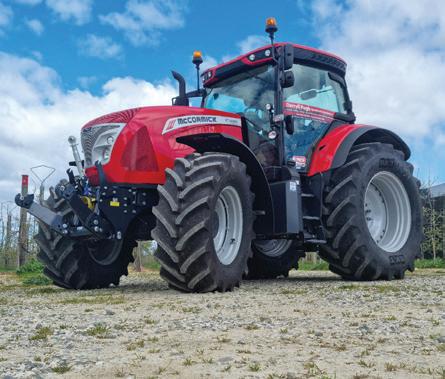

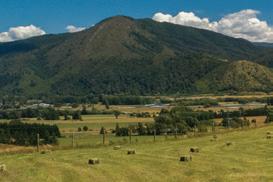
year. The mission, titled ‘Play for Keeps’, is aimed at supporting Nelson and Tasman families who are struggling to afford school sports fees, shoes and associated sport costs.

“We have set the target high, and
we may not make it, but we will achieve more aiming for fifty as opposed to ten thousand,” explains Liza Vass, a Rural Women committee member for Tasman Rural Women.


Liza, along with her hubby and
Branching Out
7-month-old son, live south of Wakefield and Liza, who has always worked in primary industries related roles, has a genuine passion for bringing women from rural communities together.

“I’m excited about the oppor-



tunities ahead to bring together like-minded women and work as a team to help families that are affected by the current cost of living crisis,” Liza says. “It’s also a
SEE PAGE 2
TOBY RANDALL 027 233 9170 toby.randall@harcourts.co.nz www.tobyrandall.co.nz Team Toby Randall Top of the South Rural “New ideas, Old school values!” PH: 03 544 5723 Main Rd Appleby, Nelson Agents for Sales, parts and service for all makes and models 24HR CALL OUT New and Used Tractors Top of the South from Karamea, Golden Bay, Murchison, Nelson Lakes, Blenheim, Nelson 32 King Edward St, Mouteka 03 528 9065 www.motfarm.co.nz ON fARM SERvicE TEchNiciAN LOCALLY OWNED AND OPERATED CIRCULATING TO 14,500 RURAL PROPERTIES IN MARLBOROUGH, TASMAN, NELSON AND WEST COAST JULY 2023 TOP SOUTH MONTHLY Farming Est 2001
Blenheim
Picton Tapawera Murchison Reefton
Nelson Wakefield
Motueka
Takaka Collingwood
Kaikoura Greymouth
Karamea
Sam Boardman in front of some recently planted Red Sonya apple trees. Photo: Eloise Martyn. Full story on page 29.
BARBARA STUART
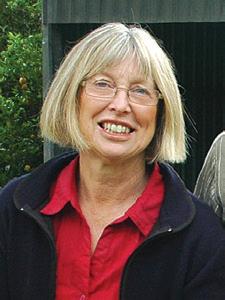
It’s July and we’ve passed the shortest day. In another month sunshine hours will be on the increase again and we will all be in to lambing, calving, and preparing for another season of production.
We are living in fast changing times. There’s so much going on and predictions for people in the export sector are glum. Plus, there’s the politicking and global conflicts. All these things affect us but its outside of our control.
Personally, I’ve found focusing on the things we can control is always the best path. Primary producers in our region are diverse and our local economies benefit from this. Local families and business-


es are innovative and export top quality fruit, wine, hops, meat, seafood and vegetables. Valuing our export markets and demonstrating behind the farmgate standards to reduce emissions is vital for maintaining our place in the global market. This is a huge adjustment and the reset happening globally is a very real pressure for individuals, our viability and our climate.
Recently I read the Fonterra booklet on farm emissions and while my first reaction was to be overwhelmed by the
task ahead, I soon realized that most are already on the journey to improvement.
I mentioned rogernomics recently to a younger work colleague, who said, “what’s rogernomics?”
For those of us who lived through that time in the early 80’s, what we know is, by learning, being market focused and innovative we can get by and adapt and most of you will in the years ahead.
As I write this the Gisborne area is being hit by days of rain again, that could be us once more! We need to adapt to the
Fewer sheep, more kiwifruit
world markets but it’s necessary to have sensible, pragmatic rules that support us to manage what is under our control, tailored for a world that now includes managing extreme rain and drought events. At home on our piece of land that means allowing our creeks more space for heavy rain events, plus having good water storage for droughts. I also hear the concerns about potential for rivers to flood private homes. Being pro-active and realistic about our future should be of top priority for everyone in our region. Only by listening, learning, and working together will we survive what’s to come. That’s my view, meanwhile, best wishes to you all, keep calm and carry on.
Rural Women on a mission
FROM PAGE 1
great way for me to connect with other women and have a break from being at home with our baby.”
Recently Liza, along with Tasman Rural Women co-founders Anna Thomas and Emma Higgins, hosted a successful and well received ladies’ long lunch at Harvest Kitchen. The objective of the event was to get ladies networking and introduce them to the Tasman Rural Women Play for Keeps mission ahead of aiming to raise to fifty thousand dollars for a good cause.

“The long lunch was a fabulous success,” says Liza “We had around twenty-five women attend, and not only did we introduce our new mission, but we also connected women to-
gether highlight the great work that the Rural Women organisation does.”
Rural Women has become a credible and respected voice on health services, education,
environment and social issues in the rural sector. The group often canvasses the opinions of its members, and the wider rural community, on issues in order to make regular sub-
missions on education, social, health, safety and land concerns affecting rural people and the regions they live in.
Liza says that the group is planning to host some more events this year, including a kitchen trail in November which will raise money for the group’s goal as well as offer an opportunity to spend some time with other women involved in the primary industries.
“A lot of people associate Rural Women with tea and scones,” laughs Liza. “But we are so much more than that. Our group is full of young mums and business owners. We encourage women to escape off the farm, step away from the business, close the laptop, forget the housework and just connect with other awesome ladies.”
STAFF REPORTER
Statistics from New Zealand’s five yearly Agricultural Production Census 2022, recently released by Stats NZ, has shown that the ratio of sheep to people, in our country, has dropped below 5 to 1 for the first time since the 1850s, when national sheep numbers were first recorded. In 1982 New Zealand sheep numbers sat at 22 per person, 22 to 1.
Jason Attewell, Stats NZ’s general manager of economic and environment insights, said that “The national sheep flock tallied 25.3 million at June 2022.” This figure is a 2% drop from the previous year, despite which, there were still 22 million lambs tailed in the 2021-2022 year.
Attewell also reported that more than 42,000 farmers, growers and foresters took part, at a response rate of about 73 percent. Attewell said that was “slightly” down from 85 percent in the 2017 survey.
“The total number of dairy cattle was 6.1 million at June 2022. This is 8% lower than in 2014 when the total dairy cattle herd peaked at 6.7 million” said Attewell. This reduction has not been evenly spread across the country, in fact the North Island dairy cattle numbers decreased by 11% and the South Island had a much lower decline of 5%.
Beef cattle numbers have stabilised around 3.9 million, rebounding slightly from the big dip in 2016 with only 3.5 million. In the horticulture sector the survey showed a big shift from green to gold kiwifruit. Over the last 10 years the land area planted in gold kiwifruit had increased 154% to 7,800 hectares, while the green kiwifruit acreage has dropped by a third. Kiwifruit continues to be the country’s largest horticultural export by value, and in 2022 covered a total planted area of 14,700.
Attewell praised the contribution of the agricultural community, stating, “Stats NZ thanks the tens of thousands of farmers, growers, and foresters who completed the Agricultural Production Census 2022. Their input helps shine a light on the importance of the industry in Aotearoa and will help shape its future.”
FILCO FARM & SPORT DEMAND THE BEST
Stainless steel blades provide exceptional cut quality Modular design provides cutting element configuration Fast operating speeds reduce tractor hours 03 578 5490 | www.bamarlborough.co.nz 2 July 2023 News Farming TOP SOUTH MONTHLY
PROFILMATIC TRIMMERS
Editor’s Corner
Tasman Rural Women committee members Liza Vass, Emma Higgins and Anna Thomas. Photo Supplied.
Danielle
Summa Donald summa@nmf.co.nz
Steve Page steve@nmf.co.nz
Accounts Queries accounts@topsouthmedia.co.nz
From Kaikoura to Brazil
ELOISE MARTYN
It’s a big trip flying over 12,000 kilometres from New Zealand to Brazil, but on the 15th of August Amy Ingram, aged 17 from Kaikoura, will be embarking on the big journey. She will compete in the Lucy Olphert Showjumping event, a prestigious competition being held in São Paulo -Brazil, on a horse she has not yet seen.
“I’m not so excited about all the flights, we drive from Kaikoura to Christchurch, then fly to Auckland then to Santiago and from there to São Paulo in Brazil. I’m really looking forward to experiencing a different culture and working with different horses,” says Amy.
Not only will Amy be competing at a world class venue, but she will have plenty of amazing sight-seeing opportunities such as visiting Iguazu Falls - the largest waterfall system in the world, going to the famous city of Rio de Janeiro and watch-
ing the sunset from Christ de Redeemer – the giant art deco statue of Jesus Christ, listed as one of the Seven New Wonders of the World and featured in many movies.
Amy saw the competition advertised online and having just been accepted to Palmerston North’s Massey University next year to undertake a Vet Science bachelor’s degree Amy thought the timing of the competition fitted well so she applied.

“I was sitting in class thinking I should enter as it’s a once in a lifetime opportunity and with uni not starting yet it would be great timing.”
To enter for a chance to compete, and join in the 12-day tour, you had to be over 16 years old, be jumping 1.15m or higher and be located
anywhere in the world.
“I had to write in about my riding experience and history, supply an unedited video of me jumping and supply two referees to support my application,” explains Amy “It was so cool to hear that I have been accepted.”

“The first week will be spent building a relationship with the horse that’s been allocated to me, I hope we partner well and can get use to each other quickly,” laughs Amy. The competition is made up of two main events a national competition and an international competition both involve a course with around 10-12 jumps.
“I am excited now but when the competition comes, I know I will be a bit nervous,”
Amy says.
“I over-think it too much,
once I get over the first jump the nerves go and I can just ride.”
Anyone selected to go needs to pay their own expenses including flights. Amy says that she has been extremely lucky with the people that she has supporting her to make it possible for her to go. The high school has allowed her time off and are very excited for her to have this opportunity. The local Lions club have fundraising with firewood raffles, her family has chipped in and are all backing her and her part time employer (that Amy relief milks for) has not only given her the time off but is extremely supportive and encouraging.
“It’s going to be awesome to watch the competitors who do the big 1.6 meters jumps I haven’t seen that very often so I’m very excited,” says Amy “This opportunity wouldn’t be possible without the awesome people supporting me I feel really really lucky.”
TOW BEHIND MOWERS
TOW BEHIND MOWERS
TOW BEHIND MOWERS
TOW BEHIND MOWERS
Kohler engines FROM $4,160+GST LOG SPLITTERS
Kohler engines FROM $4,160+GST LOG SPLITTERS
Made in NZ Kohler engines FROM $4,160+GST LOG SPLITTERS
Made in NZ Kohler engines FROM $4,160+GST LOG SPLITTERS

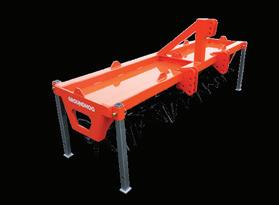



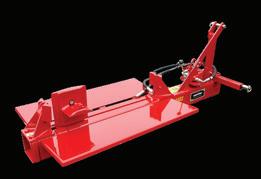



stock, motorised & tractor powered
CHIPPERS
CHIPPERS
Large range in stock, motorised & tractor powered
PTO Chippers - 3.5”, 5”, 7” and
PTO Chippers
Large range in stock, motorised & tractor powered
CHIPPERS AERATOR
CHIPPERS AERATOR
Nelson / Blenheim / Takaka / Westport / Greymouth
Nelson / Blenheim / Takaka / Westport / Greymouth
Available in 2.1m -3.6m
Visit us at 109 Bolt Rd, Nelson
Nelson / Blenheim / Takaka / Westport / Greymouth
FREE DELIVERY to Nelson / Blenheim / Takaka / Westport / Greymouth
Visit us at 109 Bolt Rd, Nelson
2.1m -3.6m widths - NZ

Visit us at 109 Bolt Rd, Nelson
FREE DELIVERY to Nelson / Blenheim / Takaka / Westport / Greymouth
Visit us at 109 Bolt Rd, Nelson
Visit us at 109 Bolf Rd, Nelson
Visit us at 109 Bolt Rd, Nelson

widths - NZ Made News Farming TOP SOUTH MONTHLY July 2023 3 Contact us 100% locally owned and operated 563 Main Road Stoke, Nelson 03 548 5900 52 Scott Street, Blenheim 03 928 4121
to 14,500 rural properties in
Tasman, Marlborough and the
Coast every month. Farming TOP SOUTH MONTHLY News news@nmf.co.nz
Circulating
Nelson,
West
Advertising Sales
Brown danielle@topsouthmedia.co.nz
Once I get over the first jump the nerves go and I can just ride
Amy Ingram
Got something to buy, sell or promote? Contact us: sales@nmf.co.nz Farming TOP SOUTH MONTHLY
Amy Ingram from Kaikoura practicing her show jumping skills. Photo: Supplied.
Federated Farmers policy announcement
WAYNE LANGFORD
Acting Chair Federated Farmers
Federated Farmers have released their policy platform for the 2023 election, setting out a rural roadmap with 12 key policy changes for New Zealand’s next government. Kiwi farmers have a great story to tell when it comes to our economic contribution, the jobs we create and the work we do to improve environmental outcomes - yet farmer confidence is at record lows.
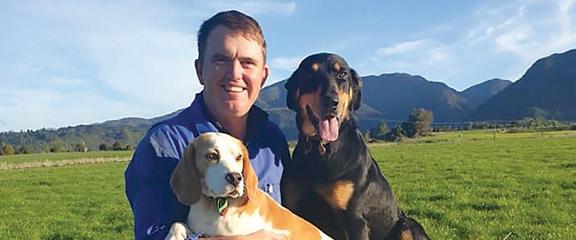
For the last five years farmers have been living through a period of unprecedented regulatory change. A swathe of new requirements for improving water quality, biodiversity and the climate have taken a real toll on the wellbeing of our rural communities. The intent of these regulations may have been good, but the reality of the execution and implementation has been nothing short of disastrous for our farmers. The end result is a long list of highly prescriptive and unworkable rules that tie us up in red tape and heap on unnecessary costs. Federated Farmers are determined to turn that around, so
we’re rolling up our sleeves and bringing some real solutions to the table. This election we’re being very clear about what needs to be done to restore farmer confidence, support thriving rural communities, improve environmental outcomes and unlock the potential of our primary sector.
The best thing about our policy priorities is that they won’t cost the taxpayer a dollar. We’re just asking for the government to get the settings right, so farmers have the confidence to invest, grow, and get on with what they do best – farming.
Federated Farmers 12 policy priorities for the next Government: Support better use of technologies. Unlock potential through water storage. Allow, young farmers to access their KiwiSaver. Urgently review our methane targets. Rethink our ETS Forestry Rules and net-zero target. Scrap the Ute tax and fix our infrastructure. Give back control to local communities. Fix our unworkable freshwater rules. Get RMA reforms right. Simplify Significant Natural Areas. Build the farmer workforce. Show fiscal and monetary discipline.
Project accelerates Pelorus planting

Native seedlings are being planted in wetlands and along rivers and streams in Marlborough’s Te Hoiere/Pelorus catchment. Te Hoiere Project is paying towards and organising the planting of 13 sites totalling 7.2 hectares this autumn and early winter, says catchment care coordinator, Aubrey Tai. Landowners and the Project share costs including buying and planting seedlings, fencing to keep stock out, weed control, and maintaining plantings.
“We help people to improve their land towards meeting national and local rules aimed at protecting the health of freshwater along with the health and well-being of people and the environment,” says Aubrey.
Dairy farmers, Mark and Simone Zillwood, are Te Hoiere Project catchment leaders for Pelorus/ Wakamarina offering over-thegate advice. They have fenced and planted natives along the banks of a stream running through their dairy farm between Canvastown and Pelorus Bridge. This prevents bank erosion and restores local
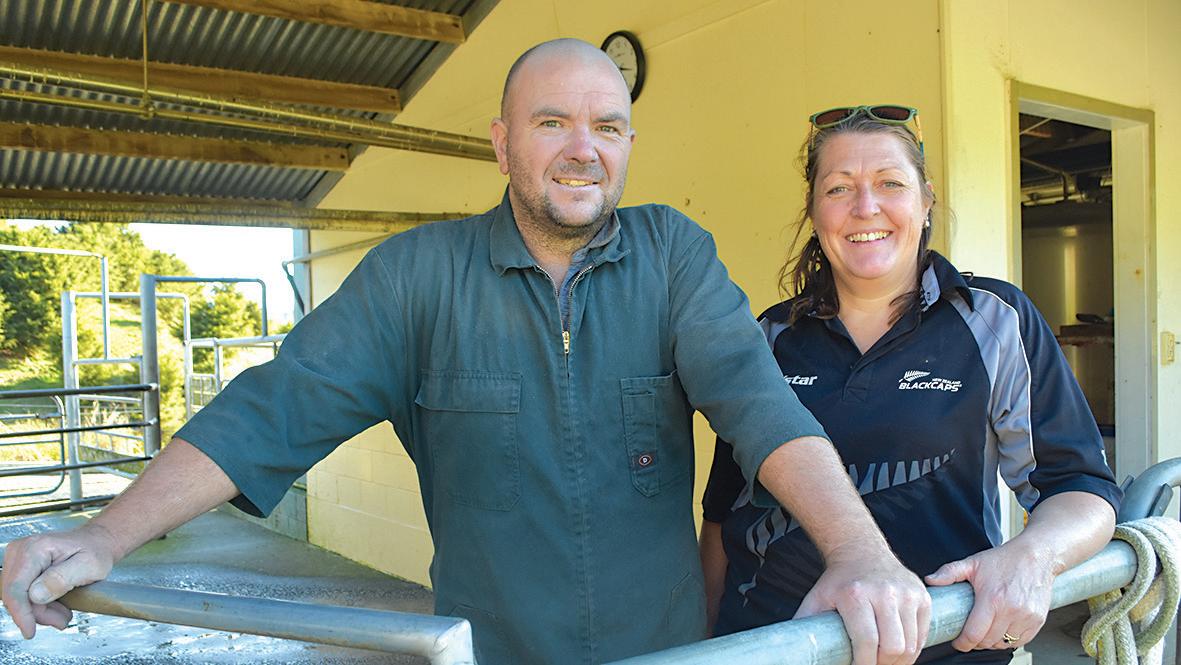
biodiversity. This autumn the Zillwoods planted another 1000 native seedlings and protected them with tree guards, helped by Te Hoiere Project. “The Project is helping people who are short of time and money, enabling them to get things done more quickly than originally planned,” says
by drilling with herbicide or helicopter spraying. Stock fences will be built, weeds controlled, pests monitored, a trapping programme developed, and options to improve fish passage explored. The Ministry for the Environment is helping pay for this wetland restoration along with Fonterra and the Department of Conservation. Waka Kotahi/Marlborough Roads provided a stop-go road crew as machinery ground poisoned willows into mulch for seedlings.
Mark. Te Hoiere Project is also providing 15,000 native seedlings to Ngāti Kuia, for planting at Ruapaka Wetland near Te Hora Marae at Canvastown. Diploma of Horticulture graduates trained by NMIT in partnership with the iwi are doing the planting, where willows and other invasive weeds have been poisoned
Ngāti Kuia Kaitiaki Mō Te Hoiere Awa Coordinator, Shannon Huntley, says the Project is a good example of co-governance. The iwi is a partner along with the Marlborough District Council, Rangitāne o Wairau, the Department of Conservation and the community. Te Hoiere Project aims to protect Te Hoiere/ Pelorus catchments and restore biodiversity from the headwaters to the sea/ki uta ki tai. Packages are tailored to each property and landowners’ ability to contribute labour, plants, or materials. To participate, people must agree to a free catchment condition survey and sign a landowner agreement.
• Predator Control
• Pest Animal Control
• Environmental Weed Control


• Wilding Pines
• Restoration Planting & Maintenance

• Wasp Control
• Grounds Maintenance
4 July 2023 News Farming TOP SOUTH MONTHLY
Wayne Langford of Federated Farmers. Photo: Supplied.
PENNY WARDLE
Te Hoiere Project catchment leaders, Mark and Simone Zillwood. Photo: Melissa Banks.
The Project is helping people who are short of time and money
Mark Zillwood
E: info@madconservaion.co.nz www.facebook.com/madconservation
Conservation solutions that work for your property, business, farms or community projects.
www.madconservation.co.nz
027 5345 918
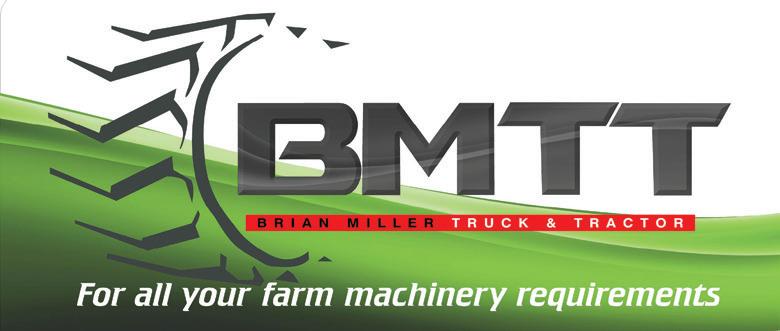



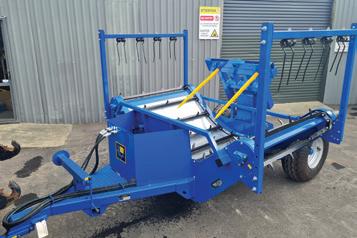




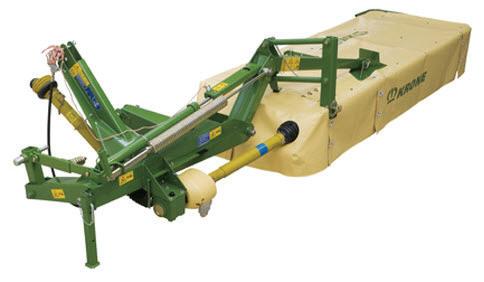






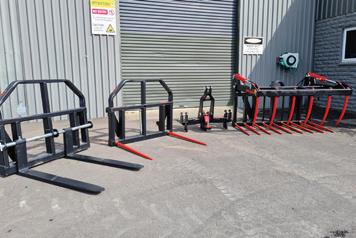
PH: 03 544 5723 Main Rd Appleby, Nelson 24 HOUR CALL OUT AVAILABLE TRACTORS AND FARM MACHINERY Full service facility for all makes of tractor, baler, mower etc... Parts for all makes and models - All oils, lubricants, filters and wearing parts BMTT FINANCE AVAILABLE ON ALL NEW AND USED TRACTORS AND EQUIPMENT Nelson Dealer for Sebco Fuel Tanks Kioti CS2610
FEL $24,700+GST Kioti CK3310
FEL $33,980+GST Kioti CK3710
$38,900+GST JCB 55Z-I Mini Excavator from $98,000+GST Krone Easy Cut R320 Mower $32,900+GST Husqvarna Ride-on Mowers from $4,600+GST Sam Orchard Spreader $55,000+GST Now in stock Berti Park P 180 Mulcher $12,765+GST Hansa C13 PTO Chipper $6,083+GST McIntosh Double Bale Feeder with square bale kit $25,740+GST Howard Slashers 1.2 – 1.8mt from $3,675+GST Vicon
Spreader $4,480+GST Fence Pro Post Drivers from $10,500+GST Rata Implements from $1,730+GST Hustler Soft Hands $3,890+GST Advert Farming TOP SOUTH MONTHLY July 2023 5
with
with
with FEL
PS403
Government term draws to a close
NADINE TUNLEY

Hortnz
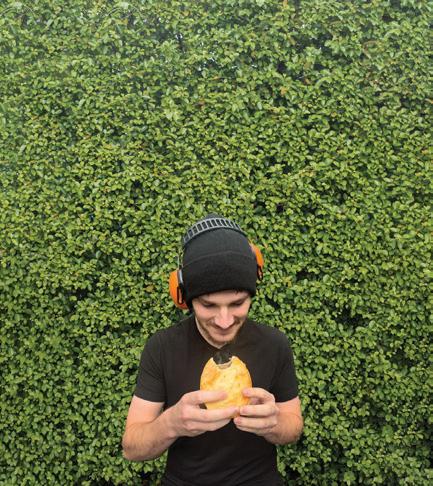
Government ministries and departments are busy finalising all the changes that they can, ahead of Parliament rising on 31 August and the General Election moving into full swing.
Recently, you may have seen media reports outlining that the Freshwater Farm Plan regulations have been gazetted.
In his media release, Agriculture Minister, Damien O’Connor said, ‘Freshwater farm plans will be phased in region by region over the coming years to ensure they are practical, starting in parts of the Waikato and Southland on 1 August.
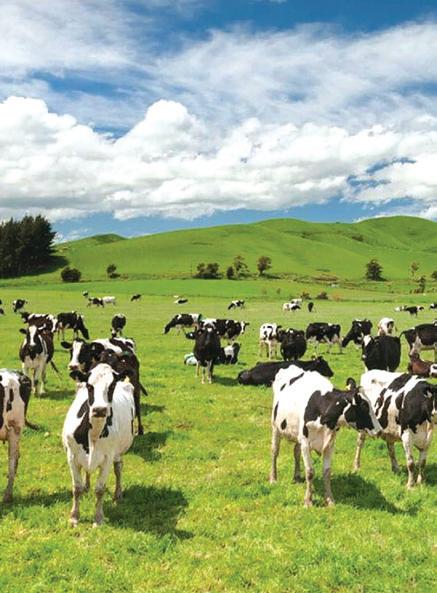
This step provides farmers certainty, and they will have 18 months to prepare their first plan after the regulations take effect in their region’. HortNZ is reviewing the regulations and will be providing growers with ongoing advice and support,


through the Growing Change initiative.
Growing Change is a three-year partnership between HortNZ and the Ministry for the Environment (MfE) to build capacity and capability within the horticulture sector to deliver Good Agricultural Practice (GAP) freshwater farm plans. The project has received funding from the Essential Freshwater Fund, which is administered by MfE. Growing Change will focus on ten catchment projects in key growing regions to support growers to develop freshwater farm plans, using the Environment Management System add-on to GAP. The projects will support growers through technical workshops in nutrient, soil and water management; specialist advisor support; and peer-to-peer learning.
If you would like more information about Growing Change, please email info@hortnz.co.nz

General
The International Organisation
New Zealander Winegrowers delighted by new Director General of OIV
STAFF REPORTER
New Zealand Winegrowers is delighted that Dr John Barker has been elected as Director General of The International Organisation of Vine and Wine (OIV). New Zealand wine is exported to more than 100 countries and is New Zealand’s fifth largest export good. Dr Barker is an outstanding New Zealander and has a deep appreciation of the history and traditions of the global vine and wine sector, but also recognises the current opportunities and challenges that our industry is experiencing today,” says Philip Gregan, CEO of New Zealand Winegrowers.
Dr Barker is uniquely qualified for the role, and currently runs his own legal and consulting practice, focussed pri-

marily on the wine sector and regulation in the international wine industry. He was formerly NZ Winegrower’s General Counsel and General Manager Advocacy from 2004 to 2014. Dr Barker has also had a long involvement with the OIV, attending his first OIV meeting in 2000 while researching his PhD thesis on the international regulation of the wine sector. He was appointed an Expert Delegate for New Zealand in 2004 and has actively participated in the OIV for 17 years in various roles, including President, Law and Economy Commission.
“He has the vision and the commitment to grow and strengthen the OIV, to ensure that it effectively addresses the key issues facing the sector, both now and in the future.
We extend our thanks to both the Minister for Foreign Affairs and the Minister for Agriculture for their support.”
The International Organisation of Vine and Wine is an intergovernmental organisation which issues recommendations on technical and scientific aspects of viticulture and winemaking. It has 49 Member States and 17 Observers. In 100 years of the OIV, there has never been a Director General from a Southern Hemisphere country. He will hold the position from 2024-2028.

“I am very honoured to have been elected as Director General of the OIV, and I thank the New Zealand Government and New Zealand Winegrowers for their support,” Dr Barker said.

Rural & Agribusiness There’s a legacy in this land Licensed REAA 2008 Visit colliersrural.co.nz Your parents worked it, and theirs before that. Their decisions shaped its future. And now, yours will too. You feel the weight of that responsibility. To do the right thing, to honour the past while securing your tomorrows. But you don’t have to shoulder it alone. There’s strength in seeking good advice. Let that be your legacy. Colliers Marlborough 027 420 4202 Colliers Nelson 03 545 6920 Got something to buy, sell or promote? Contact us: sales@nmf.co.nz Farming TOP SOUTH MONTHLY 6 July 2023 News Farming TOP SOUTH MONTHLY
Dr John Barker, elected as Director
of
of Vine and Wine (OIV). Photo: Suppled.
Winnning vineyard fuels diversity
ANDREW RITCHIE
Cath and Paul Baker hosted a large crowd at the 2023 Farming Award Field Day as winners of their category in the Cawthron Marlborough Environmental Awards.

In 2016 they made the major decision to establish a 9ha vineyard. They freely admit that the income from the grapes has enabled them to develop the property and to maintain farming enterprises and environmental projects that would otherwise be difficult to justify financially.
Sevenoaks farm has been in the family for six generations and is named after the town in Kent where the family originated. Cath’s great great grandfather was Cyrus Goulter who immigrated in 1848 and established the 3000ha Hawkesbury run famous for its merino flock that was a huge contributor to the breed’s genetics. Their care for the environment, soils and livestock was evident as the group viewed their sustainable farm system.
Principally a cropping farm amid the surrounding monoculture of grapes the Bakers produce cereals namely black oats, wheat, white
clover seed and Paul’s favourite crop, red clover.
Cath says that every paddock is soil tested before the application of any fertiliser, but the bulk of nitrogen is supplied by the legumes in the pasture. Cath maintains that the combination of catch crops and permanent pas-
ture fixes carbon in the soil in a regenerative manner. It was a pleasure to view the herd of Murray Grey beef cattle with calves at foot. As an ex dairy farmer Paul found the breed easy going with a great temperament, this year the herd achieved a 100% conception rate.
Fonterra launches new nutrition science venture arm; announces first investment
Fonterra has announced a new corporate ventures arm to incubate, scale and invest in ventures in the area of nutrition science.
Chief Executive Miles Hurrell says Fonterra is committed to staying at the forefront of nutrition innovation and creating new value streams for the Co-op. “When we released our long-term strategy in September 2021, we identified nutrition science solutions as an area with future growth potential.
“Nutrition science is a segment of the global health and wellness category that goes beyond everyday wellness products. Given our expertise in dairy science, we committed to exploring the potential for growth in this space. “We have developed a business case and agreed on a way forward, which includes establishing a corporate ventures arm with access to our dairy science and innovation expertise, combined with the agility of a startup. “The business will incubate
and scale a portfolio of disruptive ventures by developing solutions that combine science, nutrition and technology to make a real impact on human health,” says Mr Hurrell. The business – provisionally named Nutrition Science Solutions (NSS) – will operate as a standalone business within Fonterra with its own board and CEO.
It will target opportunities for value creation by adapting the Co-op’s existing capabilities and assets, alongside new disruptive capabilities, through partnerships and M&A.
“NSS will seek out, partner with and invest in global startups who will benefit from access to Fonterra’s dairy science expertise and understanding of the global market, while Fonterra will benefit from access to emerging technologies, advancements in science, and novel channels to market.
“This is a new way of working for Fonterra, but one in which we see a lot of potential,” says Mr Hurrell.
Fonterra’s new ventures arm
has disclosed its first investment — US$10 million for a minority shareholding in Pendulum, a biotech company pioneering the next frontier of metabolic health utilising its microbiome-targeted products.
The San Francisco-based company specialises in targeting metabolic health through evidence-based microbiome solutions. The partnership will see Pendulum and Fonterra establish a presence in global markets, co-develop and commercialise next generation microbiome products. These are scientifically formulated to make measurable improvements to people’s health. “This strategic partnership will enable Fonterra and Pendulum to leverage each other’s strengths – Fonterra’s innovation, manufacturing expertise and established leadership in global markets, together with Pendulum’s deep innovation, microbiome expertise and growing leadership in the US market,” says Mr Hurrell.
The ewe flock is comprised of a hybrid breed called Longdown, a stabilised breed made up from Fin, Texel and Romney. The breed is noted for its fecundity and the flock scanned at 200% this year, with hoggets scanning 127%.
In 2007 Cath’s parents David and Val established 1.9ha wet-
land under a QE11 covenant. Between floods, rabbits, drought and weeds it has been difficult to maintain but photographs taken by the trust each year has shown the growth of the natives and given them much encouragement.
An additional 1.1ha covenant has been added incorporating some of the original trees planted in the 1870s by the Goulter family such as a Himalayan Spruce and a Himalayan Deodara.
A self-confessed fan of birds Cath has enjoyed listening to the bellbirds, tui, grey warblers, and fantails that abound in these reserves. Among the community projects the couple have been involved with is the provision of an Astro- tourism venture which has seen the development of a crater observatory. In previous years a maize maze has been grown for public enjoyment. Paul said that they love what they do and believe that farming is a fabulous career particularly for young people.
Federated Farmers representative Evan White urged other farmers to enter the competition. “If we all wait around until our farming enterprise is perfect, we will never take part in the competition.”
For over 40 years Nicholson Protective Coatings have supplied abrasive blasting, water jetting and industrial painting services to a myriad of industries New Zealand wide. The largest protective coatings applicator in the top of the South Island, NPC supplies maintenance contracts to many of New Zealand’s largest companies, applying protective coatings to ships, bridges, bulk fuel storage tanks, lighthouses and large scale civil engineering projects nationwide. Based in Nelson with a staff of 40 plus and a wide range of fixed and mobile water and abrasive blasting equipment no project is too big or small for their capabilities.
NPC has a lengthy history of working in the dairy sector, ensuring that milking sheds, yards and sheds are maintained to the high standards expected in today’s primary production environment. Using water blasting equipment ranging in capacity from 3000PSI to 40,000PSI NPC can remove unsound/ flaking paint quickly and efficiently, leaving high animal traffic and chemically cleaned surfaces clean and ready for new paint. Our experienced staff can then apply the appropriate Carboline products to bare block, concrete and metal surfaces using various application methods. Coating these structures ensures the maximum lifespan for your investment, as well as improving cleaning and hygiene requirements.

If you want advice as to what can be done to protect your infrastructure in a timely and cost effective manner then Nicholson Protective Coatings would love to hear from you. To discuss your project with one of our experienced staff simply call us on (03) 5447-7407 or email us at admin@nicholsons.co.nz

News Farming TOP SOUTH MONTHLY July 2023 7
Cath and Paul Baker explaining the workings of their farm at Sevenoaks. Photo: Andrew Ritchie.
MPI animal health laboratory designated a global expert on major bee diseases
The world authority on animal health has elevated the Ministry for Primary Industries’ Animal Health Laboratory (AHL) to the top tier of expertise in two major honeybee diseases - a first for New Zealand.

The designation by the World Organisation for Animal Health (WOAH) makes the AHL, which is based in Wallaceville, an “international reference laboratory” for American foulbrood and varroosis (infestation with varroa mites). It is the first time New Zealand has had an animal health reference laboratory recognised by WOAH.
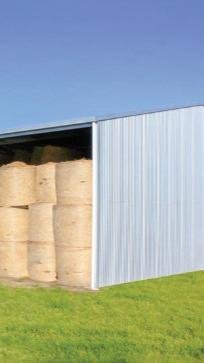
“The designation of our laboratory as a World Organisation for Animal Health reference laboratory for American foulbrood and varroa is an excellent recognition of our status as a world class laboratory,” said Dr Richard Hall, a principal scientist at MPI, who will lead the reference laboratory. Reference laboratories around the world play a vital role in advancing the knowledge and control of animal diseases.
“Being made an international
reference laboratory shows that we’re at the top tier internationally. We’re going to be helping other labs around the world and beekeepers around the world, but
it helps our beekeepers as well. “Bee diseases can be a real challenge here in New Zealand, and our increased laboratory profile will help in efforts to combat them.” A key part of applying for international reference laboratory status is the nomination of an individual scientist with standing and reputation in the field, who meets WOAH’s exacting criteria. AHL submitted a technical dossier to WOAH outlining AHL’s work supporting apiculture (beekeeping) and the expertise of Dr
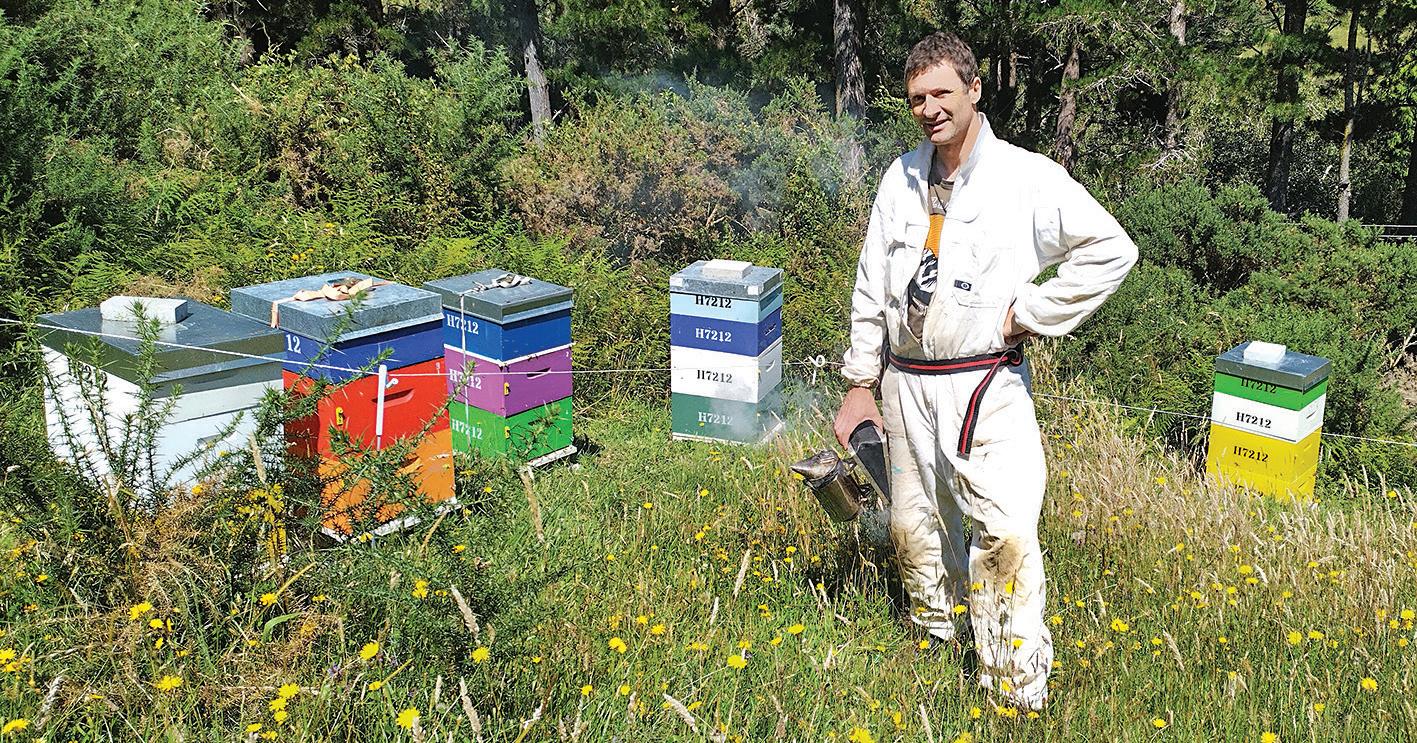
Richard Hall. This was extensively reviewed by WOAH experts and accepted by the 182 member countries of WOAH. Both varroa and American foulbrood are established in New Zealand honey bees.

The MPI laboratory will be responsible for developing new testing and improving our understanding of the biology and epidemiology of these diseases. It will continue to provide training and support for the New Zealand bee industry and advise WOAH member countries on control and prevention of disease. Dr Hall said varroa was the main cause of colony loss in New Zealand.
“Having an international reference lab for varroa here helps to focus ongoing efforts in New Zealand to combat the upward trend of colony losses to varroa.” Other labs around the world will also be able to come to New Zealand for advice. “We’ve already had links with Pacific countries and Australia supporting bee health.”
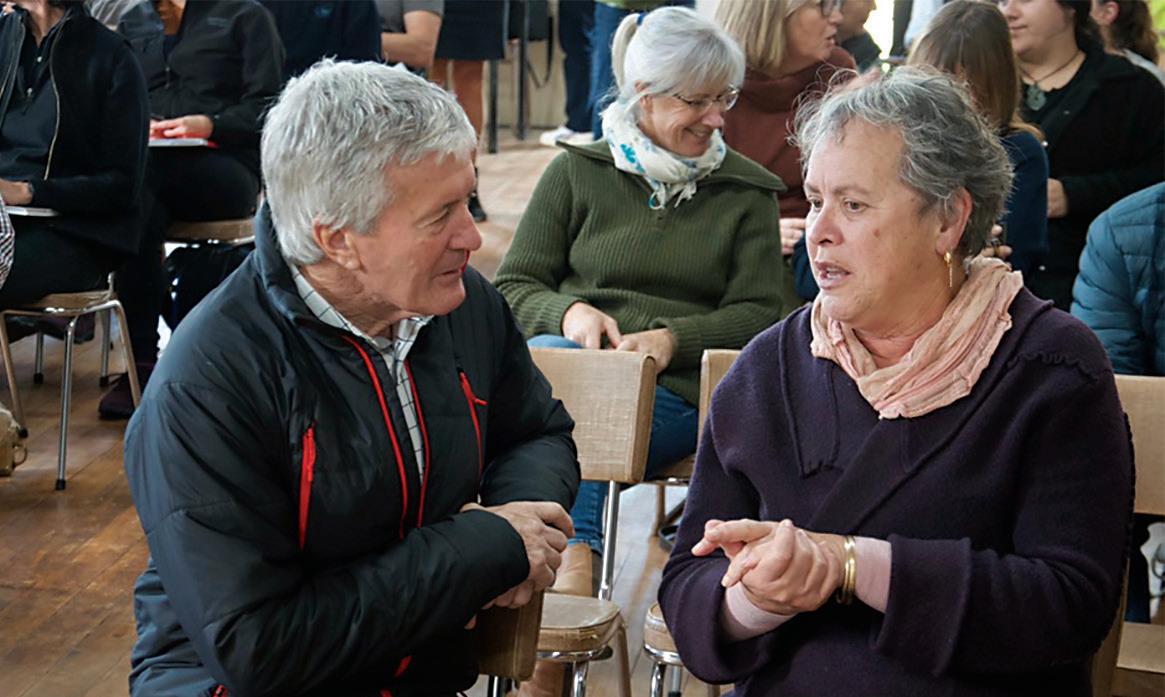
Until now, there were only two international reference laboratories for honeybee pests and diseases: ANSES (French Agency for Food, Environmental and Occupational Health &
in France and Friedrich-Loeffer-In-
From kitset sheds to the complete build • Vineyard and Hopp Development • Stock Yards • Farm Fencing • Waterway Protection Development • Farm Tracks and Fenceline Development We specialise in the Rural & Lifestyle Sector within the Nelson Tasman region Over 30 years experience Farmline FARM BUILDING & FENCING Farmline40@gmail.com | 027 963 5396 8 July 2023 News Farming TOP SOUTH MONTHLY
Safety)
stitute in Germany.
Dr Richard Hall with bee hives. Photo: Corey Hall.
Minister Damien O’Connor, chats to Motueka Collective Chair Debbie Win. The official launch of the MPI Essential Freshwater Fund grant to the Motueka Catchment Collective (MCC) took place at Shedwood Hall, Tapawera on the 2nd June. Minister of Agriculture, Damien O’Connor, announced the $870,000 capacity and capability funding at the event, attended by over 100 catchment residents, industry representatives, iwi and Council. Over the next three years, the catchment has a chance to collectively decide what the priorities are to enhance freshwater health, while balancing the interests of the diverse land uses. Photo: Supplied.
SWEEPS
MOWERS
Excavator that protect against knocks including 500-hour greasing stock.

ROLLERS
Orchard, vineyard pruning sweeps. Double and single row options, heavy-duty rubber flaps or nylon brush heads.
CONSTRUCTION
Always looking for a better way
Orchard, vineyard, and topping mowers. Front and rear mounted, side or rear discharge, wheel kits, and chain guard options.
JCB 18Z Tracked Excavator
• Built tough with all steel panels that protect against knocks



Water ballast rollers, slimline steel frame, tight turning radius, hydraulic rear wheel kit option.
• Premium quality componentry including 500-hour greasing intervals on dipper arm
• Top mounted boom ram Terms and conditions apply. Limited stock.
Marlborough 3535 State Highway 1 03 573 7089
IN STOCK NOW IN STOCK NOW Terms and conditions apply. Power Farming Marlborough Bryan Simpson Parts 027 362 1429 Dave Jeffery Sales 027 291 9576 Russell McGhie Service 027 365 1617 Blenheim 3535 SH 1, Riverlands 03 573 7089
990
$32,
STRENGTH PRICE
Marlborough 3535 State Highway 1 03 573
Advert Farming TOP SOUTH MONTHLY July 2023 9
7089
DairyNZ welcomes new chief executive
Industry good organisation DairyNZ will welcome its new chief executive, Campbell Parker, this October. The Waikato-based executive brings a wealth of experience to the role and is excited to be stepping into DairyNZ at such a pivotal time for the dairy sector.
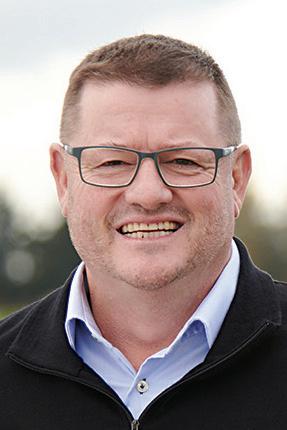
DairyNZ chair Jim van der Poel is pleased with the expertise Campbell brings to the chief executive role, including extensive experience in the rural and corporate sectors. Campbell joins DairyNZ from GEA Farm Technologies NZ, where he has been CEO since 2020. “Recruiting a new chief executive who is passionate about dairy farming and its future has been hugely important to us – alongside leadership skills to continue DairyNZ’s positive direction, as an organisation here first and foremost to represent our dairy farmers,” said Mr van der Poel. “Campbell brings significant leadership and sector experience that will be invaluable to both DairyNZ’s senior team and in supporting and representing our farmer levy payers, in a wide range of forums. “He’s passionate about agriculture and supporting New Zealand dairy to continue as a world-leading sector. With over 25 years’ experience in agriculture, Campbell’s held previous roles with PGG Wrightson,
Bank of New Zealand (BNZ) and Ballance Agri-Nutrients. He holds a Bachelor of Agriculture, majoring in Rural Valuation from Massey University and grew up on a sheep, beef and dairy grazing farm. Campbell Parker is excited by the opportunity to contribute to dairy farming in a new and challenging role. “I am genuinely humbled and excited to be joining DairyNZ as the next chief executive. I am passionate about the role the dairy sector plays in creating jobs, building communities, and contributing to the success of the New Zealand economy,” said Campbell. “It’s important to build on the good work Tim and the team have done over the past decade, and to keep that moving – working collaboratively to ensure long-term sustainability and profitability of the sector.”
Mr van der Poel also thanks departing chief executive, Dr Tim Mackle, for his significant service to DairyNZ and its farmers. “Tim has been a true advocate for our dairy farmers and a steadying force at DairyNZ, during a period of significant change and challenge for the dairy sector,” said Mr van der Poel. “His knowledge, expertise and tireless passion for dairy will be missed. We thank Tim for his commitment to farmers and wish him all the very best.”
SMALL SCHOOL, BIG HEART
The best way to get through

Peter McLaren is no stranger to dairy farming. He grew up milking cows and by age 20 he had had a gut full of dairy, so took a break and went shearing for 16 years. Interestingly he returned to his dairying roots and slowly got back into the dairy sector.
“You can’t shear sheep forever and the money side of dairying was more stable for a family, I was lucky to get in with good people that got us started,” Peter says. That was thirty odd years ago now. Peter, and wife Helen, have farmed at Tutaki, Maruia and are now settled in Ariki Falls, Murchison. Fonterra announced recently a lower opening milk price for famers next season, as well as cuts for this season mainly due to the Chinese demand still well below preCovid levels. The pay out for farmers is expected to be between $7.25 and $8.75 per kilogram of milk solids for the season starting. The $8 per kgMS mid-point, which farmers are paid off, lags behind the $8.20 per kgMS it expects to pay this season.
“It’s going to be extremely hard and dairy farmers everywhere need to be very careful about what they do and make sure that they are operating a farming system
that is suited to them,” explains Peter. “It’s very hard to have extra staff and helping hands in the system with an $8 pay out.”
There are some proactive things farmers can do to help push through the season including creating plans for every situation related to the business, places such as NZDairy have these resources available and can be amazingly helpful tool as well as insightful.
“The best way to get through,” jokes Peter. “Is to not employ anyone, not put any fertilizer on and not have a mortgage.” Peter does have some more practical and serious advice. “Spend on what you need and not want you want, keep an eye on the budget monthly, attend the local discussion groups in your area- they offer good support and information, check in with the bank to see what they can do for the upand-coming months.”
Current on farm working
expenses are sitting between $6-$7 a kg milk solid, add to that interest rates and repayments calculated to be around $2 a kg and you start to understand the challenges and pressure many will be facing.
“Around seven years ago the payout dropped to $3.80 and farm working expenses sat around $3.50 which left no room to find money to pay the mortgage,” explains Peter. “Dairy farmers are adaptable, we came out the other end then and we will make it through this.” Fonterra have reported that they are ‘very positive’ about the Chinese market for the medium to long term due to its favourable demographics with a growing middle class and increased consumption of dairy products. “The price will bounce back it’s just a matter of when,” Peter says. “It’s a challenge that requires us to each find our inner strength and forces us to dig a bit deeper.”
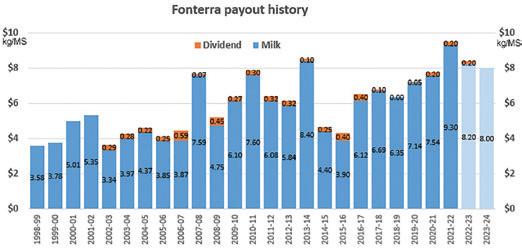
ENROLMENTS FOR 2024 OPEN




Learning in an open and contemporary environment

Established in 2002 Garin College in Nelson was founded on the building blocks put in place by Father Garin in 1850. Father Garin was a French Catholic Marist Priest who strongly believed that education was the key that allowed young people to make their way into the world. Celebrating 21 years of educating, supporting, and nurturing its learners, Garin College is a Catholic Co-ed State Integrated Secondary School that provides a safe space for learners to feel welcome and supported. The Garin College Hostel provides boarding for boys and girls from across the top of the South Island, and as far away as the Chatham Islands. The vision of the Hostel is that all students seeking a Catholic secondary education in Te Tau Ihu are able attend the College as a boarder in the Hostel. The Garin College Hostels are well established with shared recreation facilities and are made up of two 15-bedroom homes nestled in a quiet residential subdivision a short walk from Garin College. Consisting of Mother Teresa House for female students and Francis Douglas House for male students, the hostels are designed to be like large family homes, creating a ‘living in

Boarding is a great experience, the chance to meet new people, experience new cultures and make new friends.
a family’ environment for boarders. The Garin College Hostels are modern, vibrant, and stimulating environments that provide wonderful opportunities for personal growth as students interact with a diverse community and make new connections. The Hostel and its boarders bring a vibrancy to the college community. Boarding at Garin offers great experiences, chances to meet new people, experience new cultures and make new friends. Being in Nelson and at Garin College offers great opportunities to be involved in schoolbased, after-school and weekend activities. “Your child will be encouraged to develop their personal character and strive for excellence in their learning, sport and culture while exploring how the Catholic faith can be part of their life and service. We all agree that family is the best place for a child to be raised, so when choosing a boarding school for your child to attend why would you not choose a hostel where your child is going to be part of a family, The Garin family.”
Call Garin College for more info about the upcoming Parent & Whānau Information Evening and Open Day. Business Update. Adv.
Champion Road, Richmond. P. 03 543 9488 E. achieve@garincollege.ac.nz www.garincollege.ac.nz Please contact our friendly Admin Team for enrolment and boarding information
GARIN COLLEGE
Parent & Whanau Information Evening: 19 July 2023, 7pm Open Day: 26 July 2023, 12 noon - 2.30pm
NOW
10 July 2023 News Farming TOP SOUTH MONTHLY
Campbell Parker
Connecting youth to the ag sector

ELOISE MARTYN
Hazel Molloy is about to shed some light, to the younger population of Golden Bay about who Federated Farmers are and what they do.
Hazel, a student at Golden Bay High School, volunteers her time once a fortnight to host a community radio show aimed at connecting to the youth in the area.

“I’ve been doing the show for almost four years, and I love it,” Hazel explains. “I talk about youth events, interview interesting people, play music and have friends come on and chat about what’s going on for them.”
Hazel says that she also talks about things that are happening for her in the hope’s others listening can relate.
With agriculture playing a big part in the region, as well as nationwide, Hazel was keen to bring an element of the sector into her show. Her aim is to not only bring visibility to the important sector but inspire people her own age, that are getting ready to finish high school, to consider getting involved in the primary sector work wise.
So, when Federated Farmers Golden Bay and Nelson offered to sponsor her show she was excited and knew it would be a good match. “Its going to

be really nice to bring something new to the show and I don’t know much about Federated Farmers so it will be cool to learn something myself,” she says.
The aim is to interview local rural people, on the show, who are involved in the organisation that can explain who Federated Farmers are and what they do, as well as bring visibility to the agriculture sector and its importance to New Zealand’s economy. Although the show is aimed at youth it has a wide range of listeners and the shows are recorded and broadcasted at several times during the fortnight. Hazel’s experience with radio broadcasting has highlighted how much she enjoys working in media and as a result she is considering studying marketing and communications when she finishes high school.
“There’s heaps of job opportunities out there and I really enjoy it so I’m looking at my options,” Hazel explains “Although I talk about serious topics, I try to keep it light and have a good laugh. I have lots of friends and family who are rural and through that I have an appreciation of the value of farming so I’m really looking forward to having the opportunity to connect the ag sector and my show together.”
Caltex Wakefield
Farmlands Richmond
Farmlands Motueka
PGG Wrightson Murchison
Brightwater NPD
BMTT
Tractor Repairs & Spares Richmond
Harcourts Richmond
Bayleys Wakefield
Tasman Honda
MS Ford
Top South Media
Farmlands Hokitika
Farmlands Greymouth
Tasman AG Ikamatua
Farmlands Westport
Karamea Visitor’s Centre
PGG Greymouth
Buller Vets
Farmlands Blenheim
Seddon Supermarket
Renwick Supervalue
Tractor Repairs & Spares Renwick
Farmlands Kaikoura
PGG Kaikoura
Rai Valley Brick Oven
4 Square Havelock
TSM Marlborough
AVERAGE READERSHIP
Farming TOP SOUTH MONTHLY Delivered to all rural homes from Greymouth to Golden Bay and Kaikōura to Marlborough Sounds. We’ve got you covered. CIRCULATION
Danielle Brown
WEST COAST
34,800
14,500
0221605094 danielle@topsouthmedia.co.nz
TASMAN MARLBOROUGH FIND YOUR FREE COPY Contact Danielle for all your advertising enquiries News Farming TOP SOUTH MONTHLY July 2023 11
Hazel Molloy getting ready to bring her radio show and the agriculture sector together.
Photo: Supplied.
Hello rural reality, goodbye Wellington



Farmers and growers are the backbone of our economy –but Labour’s obsession with new rules and regulations has put primary producers under siege. A National Government will get Wellington out of farming. We have set out 19 actions to make life easier for farmers. And we’ll put hard limits on forestry conversions of prime agricultural land – that are devastating rural communities and driving young Kiwis out of farming. We will bring respect back to the relationship with farmers and growers that has evaporated from Wellington. Because it stands to reason, if you’re working every hour of the day feeding New Zealand and the world, your business matters, your voice matters, and your community matters. Health is of great concern to people because the system is broken, with the biggest challenge being a severe shortage of skilled frontline staff. National has a comprehensive plan to encourage more New Zealanders to study nursing or midwifery and then to stay in our
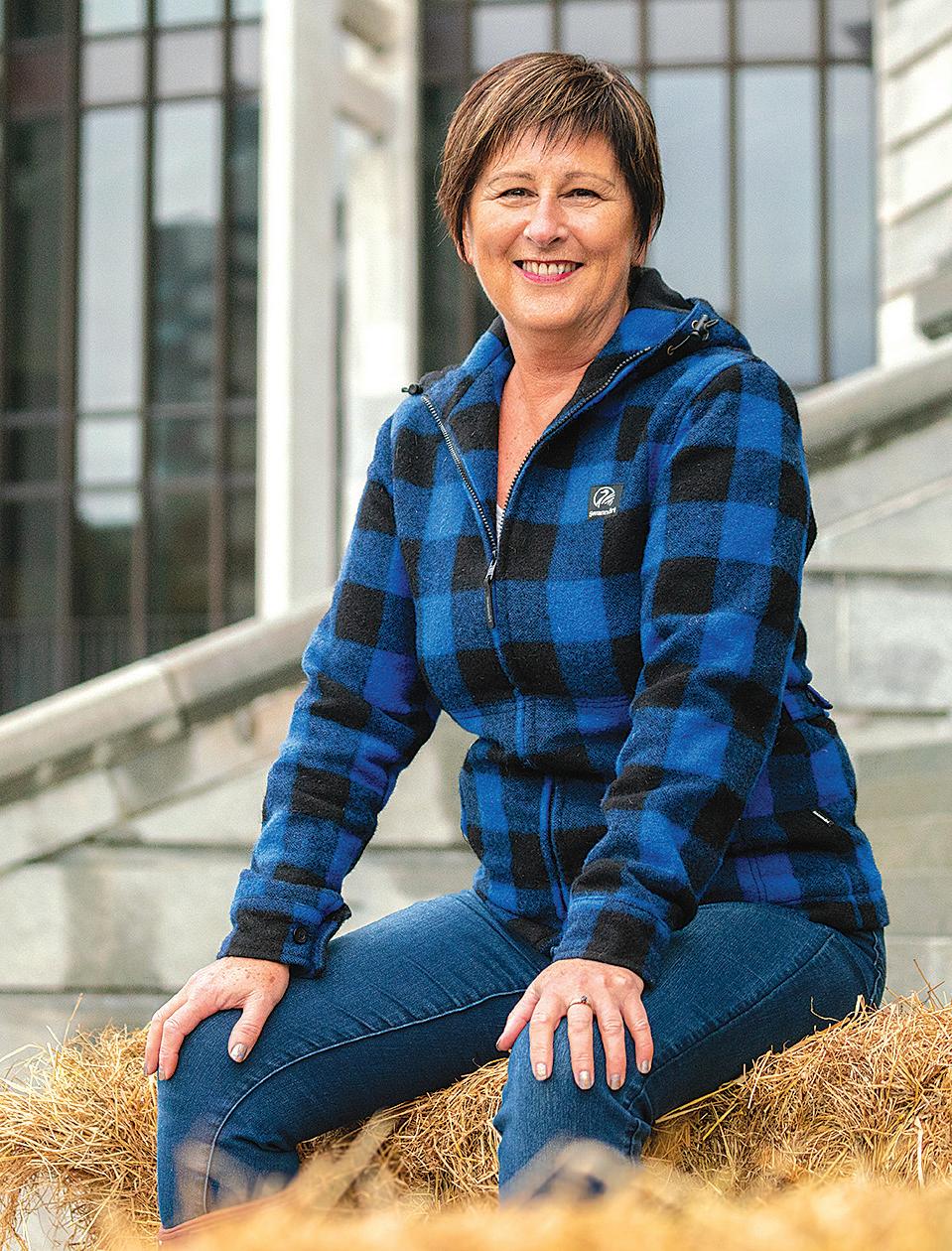
country. For those who remain here in their profession National will cover loan repayments up to $4500 a year for the first five years after graduation - it’s a pragmatic win-win way for New Zealand to retain those essential skills where they are needed. Lawlessness is of great concern. We make no apology for being tough on law and order. We are going to put public safety first again. National has announced a policy that would make gang membership an aggravating factor in sentencing - we are committed to tougher consequence for crimes and backing police to tackle the increased lawlessness we are seeing in both rural and urban areas. We are going to restore the Three Strikes policy for serious offender remember, this was brought in to make sure that the worst repeat violent criminals face appropriate sentences for continued offending. We are also going to end the practice of taxpayers paying for written cultural reports on offenders to reduce sentences. A National Government will be serious
about protecting the public and serious about making sure that there are real consequences for criminal offending. The question I’m often asked is ‘what will National do differently if they become the Government?’ The answer is all about better managing the New Zealand economy and helping working families to succeed. National has a plan to stop wasteful Government spending and to get inflation under control. The impact of the current cost-of-living crisis is being felt throughout this region: whether it’s at the supermarket checkout, buying a school uniform, keeping up with rent increases, re-fixing the mortgage or running vehicles - Labour’s mismanagement of the economy means people are actually going backwards. A strong economy will allow the things we all want, more accessible health services, better education for every child, more protection of the environment, better highways, resilient infrastructure along with safer roads and safer streets.
Deluxe
ccommodAtion U nits Options from 9m to 12m length built to your requirements Council Certified NEW 2 or 3 Bedroom Design SELF CONTAINED READY FOR CONNECTION TO SERVICES DELUXE SPECIFICATIONS • Superior Insulation • Double Glazed • En-suite Bathroom • Gas Hot Water • Portable Steel Chassis • Tow-bar and Wheels Option • PRICES FROM $90K +GST • SIZES 10M - 12M LENGTHS • 1, 2 AND 3 BEDROOM OPTIONS Building and Display site: 35 Anchorage Road, Hornby, Christchurch Ph: Pete Sturgeon 021 222 6680 or Gerard Faye 0274 808 217 • Email: pete.hiab@gmail.com ACCOMMODATION UNITS 12 July 2023 News Farming TOP SOUTH MONTHLY
A
Maureen Pugh National List MP based in West Coast-Tasman looks forward to the key issues of the 2023 General Election in October
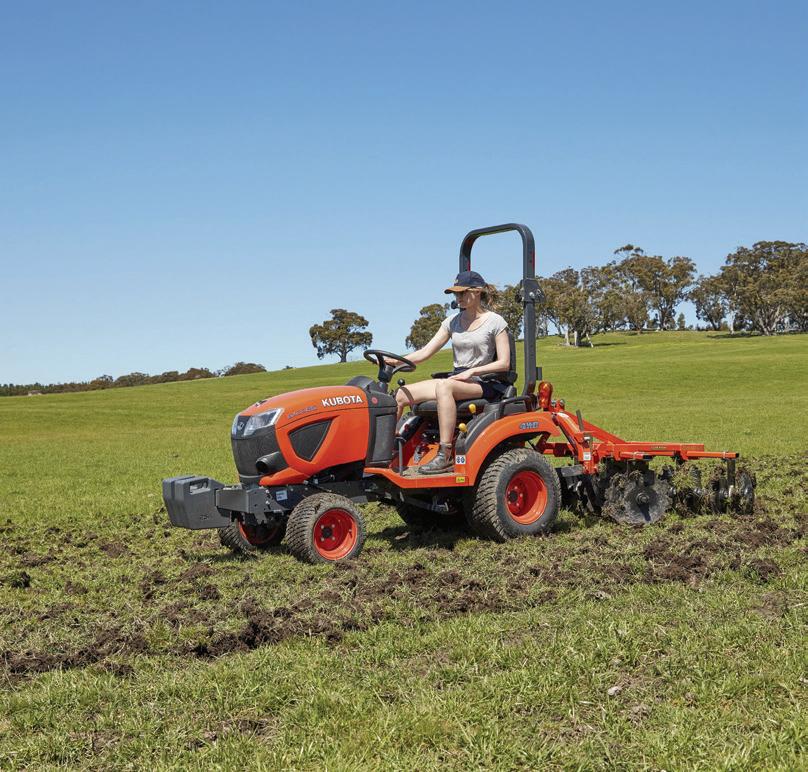
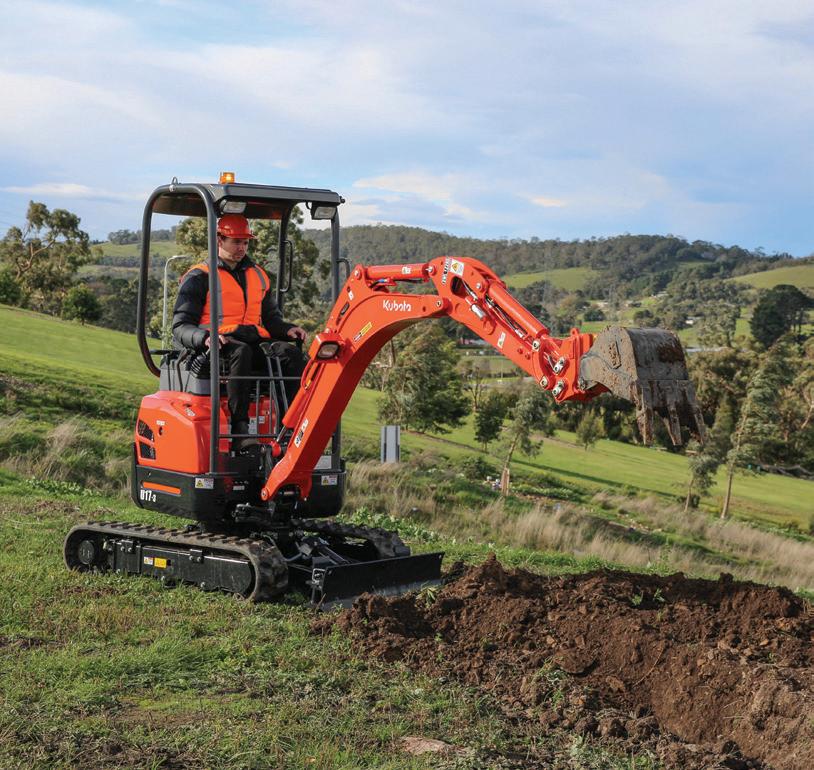



PROVIDED BY UDC FINANCE LIMITED ACROSS THE M SERIES RANGE P RO V I DE D B Y UDC FI NA NC E LIMIT E D RELIABILITY COMFORT VERSATILITY WORK BETTER *This finance offer from UDC Finance Limited is only available to eligible business applicants on loans with a term of up to 36 months. The 2.99% p.a. interest rate is fixed for the term of the loan and is only available with a minimum 30% deposit and applies to new BX, M5, MGX and M7 models. UDC Finance credit criteria, fees, terms and conditions apply. The finance offer is valid to 31/07/2023. ** This finance offer from UDC Finance Limited is only available to eligible business applicants on loans with a term of up to 36 months. The 2.00% p.a. interest rate is fixed for the term of the loan and is only available with a minimum 30% deposit and applies to new U17 models. UDC Finance credit criteria, fees, terms and conditions apply. The finance offer is valid to 31/07/2023. ^ BX series pricing displayed for BX2380 tractor only. Stock is limited, other models available. WINTER DEALS A MAGNIFICENT M SERIES LINE UP PROVIDED BY UDC FINANCE LIMITED ACROSS THE M SERIES RANGE M5111DH - 111HP ROPS TRACTOR FROM $76,999+ GST M100GX - 100HP CAB TRACTOR FROM $95,999+ GST M7132S-60 STANDARD 50K DELUXE TRELLEBORG 540/650 FROM $144,999+ GST FROM BX2380V-AU-23HP SUB COMPACT ROPS TRACTOR $18,999^ + GST 0800 NORWOOD | NORWOOD.CO.NZ U17-3HG PRICE INCLUDES HYDRAULIC TILT COUPLER + 3 BUCKETS $39,500+ GST FROM Advert Farming TOP SOUTH MONTHLY July 2023 13
Gamebird management in Nelson/Marlborough


As a statutory organisation under the Conservation Act, Fish & Game has been entrusted by Parliament to manage, maintain, and enhance the gamebird and sports fish populations on behalf of the Crown, in the interests of hunters and anglers. Some gamebird species under the management of Fish & Game are indigenous to this country.

In order to meet our statutory obligations, population trend counts are undertaken by all Fish & Game Councils. These counts are not a total census of bird numbers, but an estimate of population trend, based on counting the same sites at the same time each year. Paradise shelduck, for example, congregate and moult on larger ponds and lakes in late January. At this time, they cannot fly while they moult their primary wing feathers, so this behaviour gives us the ability to keep a fairly accurate record of population trends over time. In Nelson/Marlborough, many moult sites are counted in reasonably quick time using fixed
wing aircraft, covering the full expanse of the region. The bulk of the regional black swan population in this region is counted annually by fixed wing aircraft observers on the inside of Farewell Spit, although smaller populations are also counted within sites such as the Wairau Lagoons complex in Marlborough. The beautiful highly mobile native shoveler duck is counted by regional Fish & Game staff at sites throughout NZ within the same few days. Pūkeko are monitored annually in many Fish & Game regions, though counts at selected sites. Greylards (a mix of native grey and introduced mallard duck populations with significant hybridisation), are also counted throughout NZ in late March/early April via a mix of random transect or static site surveys depending upon regional topography. Within the Nelson Marlborough region, around 60 static count sites are surveyed near the coast from Golden Bay to the Wairau Lagoons (including Havelock sites). While none of
these monitoring approaches gives us absolute population size estimates, they provide fairly robust estimates of any population changes which may be occurring, allowing Fish & Game (the management agency) to increase or reduce annual harvest regulations where appropriate.
Trends in all monitored gamebird populations within this region are currently fairly stable, although anecdotally pūkeko populations have expanded significantly within Tasman and Golden Bay over the last few decades, while mallard populations have declined due to landuse changes such as loss of cereal or pea cropping and the like to grapes etc. Out of all the species we monitor in this region, the native pūkeko and paradise shelduck seem to have done extraordinarily well within the modified agricultural landscapes here and within rural New Zealand, in contrast to many of our non-hunted native birds which are declining through predation and habitat impacts.
Lift N Shift Ltd 24 Venice Place, Stoke 03 547 0670 - 24hrs www.liftnshift.co.nz Modern well maintained fleet of trucks and mobile cranes We can move anything, anywhere in the top of the South Island, from cars, trucks, pipes & pools 14 July 2023 News Farming TOP SOUTH MONTHLY
Welcoming Family Environment High-level academic & leadership programmes More than 30 sports options Year-round outdoor activities in the Nelson/Tasman region Competitive rates & no school fees Boarding Enrolments Now Open START YOUR LEGACY
Tasman Report

The Crusaders have done it again for those of you who don’t follow rugby, and while it does get a bit “Ho Hum “winning 7 in a row it was a great match – It has been great to watch all the Tasman players who have performed well so far in the competition and with the World Cup on our doorstep it will be interesting to see how many make the grade before they all head off overseas to chase the big money. Not much to report farming-wise – I have been attending all the local bull sales and sharing stories with the huge turnout of farmers, families and rural businesspeople I am reminded of the value of attending these events where you see real people in their comfortable environment.
The social value of any day off the farm attending community events (which is what they are) is immeasurable and whether it is catching up with someone you haven’t seen for a year or talking to a neighbour it should be encouraged for everyone.
I have been lucky enough to recently visit our West Island for a week or so and I made sure I talked to a lot of locals in the lucky country. They are facing the same issues we are with cultural, economic, social, health and financial issues all main topics of conversation.
They are experiencing the cost of living crisis, rapid interest rate hikes, and a gap between the ”haves and the have-nots“ that is widening but they are pretty optimistic for the future. I was in Queensland where the building and infrastructure projects are everywhere
EXCLUSIVE
and the economy looks vibrant – and the one thing I did notice was – hardly any road cones.. What are they doing so right..?
Perhaps an election billboard will pop up with one party claiming that they will reduce road cone reliance rather than reduce speed limits - got to be an election winner that one.. Anyway – winter is well through, and we are looking at the prospect of a great Spring so let’s all have a great month and be careful out there.
NEW LISTING
KOROMIKO 736 State Highway One
Koromiko Home, Grazing, and Trees
A 66.5-hectare (164 acres) mixed-use farm in a desirable location just minutes from Picton and an easy drive to Blenheim. The farm has a good balance of flats that can be used for finishing or making supplementary feed with the clean hill ideal for grazing. Currently operated as a deer breeding and finishing unit with some cattle, this could easily be used for dairy support, calf rearing, beef finishing, or perhaps even viticulture in the future. An extensive lane-way system is in place for ease of stock movement. A 13-hectare stand of mature Pinus Radiata is ready for harvest to provide an immediate return on your investment. A comfortable threebedroom, two-bathroom Glenroy home with huge living and kitchen areas will appeal to most.

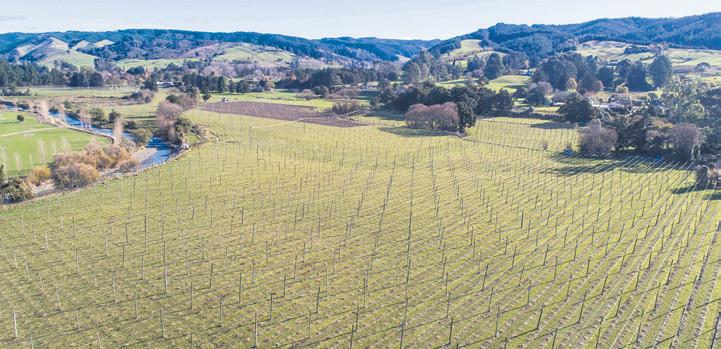
pggwre.co.nz/BLE37723
3 2 2
PRICE BY NEGOTIATION Plus GST (if any)
VIEW By Appointment Only
Joe Blakiston
M 027 434 4069
E jblakiston@pggwrightson.co.nz

Greg Lyons
M 027 579 1233
E greg.lyons@pggwrightson.co.nz
FOXHILL 695 Wakefield-Kohatu Highway
Prime Horticultural Opportunity
A rare opportunity to acquire a fully established hop farm situated approximately 7km southwest of Wakefield. The property consists of 18.248 Hectares in three titles. Flat alluvial soils on two terraces with good water consents suitable for a range of horticultural uses if a new owner does not want to operate the hop farm. Approximately 10ha is in garden with the balance of the land in terrace and river edges, pine trees and an area of approximately 1ha which has been cleared ready for development. There is another 1.7ha planted in hops which is leased from an adjoining neighbour. A two storey, four-bedroom home sits in a corner of the property in a private sheltered setting, currently rented out.

pggwre.co.nz/NEL37953
4 1 2
DEADLINE PRIVATE TREATY Plus GST (if any)
Closes 2.00pm, Friday 7th July 2023
(Unless Sold Prior)
VIEW By Appointment Only
Doug Smith
M 027 543 2280
E douglasjcsmith@pggwrightson.co.nz
Steve is a well-known and respected local having lived in Marlborough for the past 34 years. Steve has worked in education as a primary school principal across several rural, semi-rural, and urban communities.






Over these years Steve has developed long-lasting relationships within the community. Rugby has been a big part of Steve’s sporting life, as a player and coach up to representative level.
Steve’s strong connections with the rural sector and his personal experience in owning and developing vineyard and lifestyle properties, provide Steve with inside knowledge of what his real estate clients are likely to require. If you are considering your next real estate move and looking for a salesperson with integrity, dedication, and knowledge to meet your needs, then give Steve a call.
 Steve Crockett
Steve Crockett
Licenced under the REAA 2008
PGG Wrightson Real Estate Limited, licensed under REAA 2008 Helping grow the country
RURAL | LIFESTYLE | RESIDENTIAL
Rural, Lifestyle, Residential Sales Consultant
M 021 066 0397 | E steve.crockett@pggwrightson.co.nz
to the Blenheim Real Estate Team
Welcome Steve Crockett
Advert Farming TOP SOUTH MONTHLY July 2023 15
Joe Blakiston 027 434 4069
CM Mechanical Limited


Agricultural emissions
STUART SMITH Kaikoura MP

Two recent announcements from the National Party signal a realistic and practical approach to agricultural emissions.




The ‘Harnessing Biotech Plan’ will lift the ban on genetic modification and gene editing, allowing us to unlock the benefits of these technologies in science, health, and agriculture. Our Agricultural Emissions policy, which neatly aligns with the Biotech Plan, forms a cohesive and comprehensive approach.
The agricultural sector is crucial to the New Zealand economy, with our farmers being world leaders in pasture-based farming. However, they have been unfairly labelled as climate villains, primarily due to the emissions of biogenic methane, which were thought to account for nearly half of our total emissions.
Our plan is centred around equipping farmers with effective tools to reduce emissions while maintaining productivity. This includes lifting the ban on gene editing and genetically modified technologies, implementing farm-level emissions measurements by 2025, continuing investments in research and development, and establishing on-farm sequestration standards based on robust scientific criteria. If you can measure it, you can claim it.

By embracing biotechnologies such as methane inhibitors,



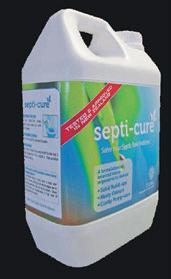





animal vaccines, and genetically modified grasses we can make significant strides in reducing emissions.

A GM High Metabolisable Energy (HME) ryegrass developed here in New Zealand had to be field-tested offshore due to our outdated legislation. The HME ryegrass is not only drought-tolerant but also reduces animal emissions and enhances productivity. We propose a separate pricing system specifically tailored for agricultural emissions, distinct from the broader Emissions Trading Scheme (ETS). This pricing system will be designed to effectively reduce emissions without jeopardizing agricultural production or encouraging the relocation of farming activities overseas. Furthermore, we will conduct a thorough review of methane targets to ensure their alignment with the objective of no additional warming from agriculture, as stipulated by the Zero Carbon Act. This review is long overdue. The Intergovernmental Panel on Climate Change (IPCC) recognized in its sixth assessment report (AR6) that agricultural emissions have been overestimated by a factor of 3-4. In other words, when considering the revised metric, our agricultural emissions account for only 10% of our
Book Review
total emissions, rather than the previously estimated 43%. Regrettably, our Ministry for the Environment’s farm methane policy continues to defend outdated methane metrics. It is crucial for the Ministry to base policies on sound science rather than political considerations. To not do so is to continue an exercise in self-flagellation. Additionally, we propose implementing limits on the conversion of high-quality land to carbon forestry. These limits will be determined through thorough land quality assessments to prevent excessive conversions that could harm rural communities.
Farmers will still have the opportunity to plant trees on unsuitable portions of their land and generate additional revenue through the ETS. This approach strikes a balance between diversifying land use and preserving valuable agricultural resources.Given the global nature of climate change, it is crucial for us to make a meaningful contribution without jeopardizing our economic well-being. We must focus on implementing evidence-based policies that will yield tangible results. There are those who would rather we do not address emissions at all. I say to them, keeping in step with the rest of the world is our passport to trade.
“Takahe - Bird of Dreams” by Alison Balance, published by Potton and Burton. $59.99

Zoologist Alison Ballance and Nelson-based publishers Potton and Burton have done a terrific job with this magnificent volume on New Zealand’s native bird, the takahe, once thought extinct but rediscovered by deerstalker “Doc” Orbell in 1949 in a remote Fiordland valley. The discovery by the Invercargill doctor and his team of friends showed the deep interest hunters can have to wildlife and conservation beside the game quarry.
Indeed the “Save Manapouri” battle featured deerstalkers in the front line.The takahe recovery programme will this year celebrate its 75th anniversary with takahe numbers now exceeding 500.
Many wildlife personalities, emerge within this wonderful portrayal of a truly successful conservation story. Meticulously researched and brilliantly told, great photos and wonderfully produced, make for a stunning book.
Breakthrough Product Developed for your Septic Tank 0800 109 202 www.ecoworld.co.nz Also Available at: ATTENTION SEPTIC TANK OWNERS Before* After* Septi-CureTM is: Cost Effective Easy To use Improves Soakage Reduces Solids and Scums Eliminates Nasty Odours Reduces Costly Pump-outs *Results may vary A satisfied customer in Hamilton has been using Septi-Cure™ for over five years. He says this allows them to have an odour free septic tank with low maintenance costs. He also says that his service person is amazed at how well Septi-Cure™ works, keeping their tank in very good condition. Like us on Facebook 11 Jacks Road, Renwick 03 577 5508 sales@cmmechanical.co.nz www.cmmechanical.co.nz
ATV SIDE-BY-SIDE VEHICLES
Electric & Petrol, purpose-built for off-road travelling, designed specifically for New Zealand conditions. Rugged, dependable and powerful! COME AND CHECK THEM OUT NOW! 16 July 2023 News Farming TOP SOUTH MONTHLY
TUATARA
TONY ORMAN
Got something to buy,
or promote? Contact us: sales@nmf.co.nz Farming MONTHLY
sell


Advert Farming TOP SOUTH MONTHLY July 2023 17
LAMBING
Before it gets crazy busy with lambing now is a good time to stock up on the supplies you will need. Remember that swift intervention and good hygiene practices are essential to keep your lambs and ewes healthy. Now is your opportunity to set up for a successful spring period and ensure you have enough supplies on hand to see you through. Listed below are some common yet essentials items however every farm is different, so we encourage all famers to build their own supply list and refer to it each season.
• Iodine spray • Disinfectant
• Dextrose • Woolovers • Anti-inflammatories/Pain Relief (e.g., Metacam) • Tube Feeders and Colostrum
Don’t forget about the ewe
The lambing period demands a lot of energy from your ewe, from lambing, lactating and chasing the runaway lambs. Make sure you have also stocked up on metabolic treat-
ment (e.g., glucophos bags and ketol) in case your ewe looks like she needs a pick me up. Having bearing harnesses on hand also means that swift intervention can be taken, increasing the chances of resolution.
Lambing Tips
1. Get everything ready for lambing in good time and be prepared for those surprise very early lambs.
2. Have plenty of good colostrum (sheep, cow or powdered) on hand as it’s the key to good lamb survival.
3. Learn how to tube feed starved lambs, and warm them up.
4. Good shelter for new-born lambs and regular checking to see they all have suckled is also critical.
5. Only ewes with large udders will feed triplets, but even then, a triplet may be left hungry.
6. Ensure all ewes suckle twins
and hand rear the surplus or foster them on other ewes (but know success in never guaranteed).
7. Record all ewes that cause problems at lambing and mark them for later culling – the sooner the better to save feed.
8. Ewes and lambs need plenty of good clean water but cover troughs to prevent lambs from drowning.
9. Dock and castrate lambs with rubber rings before they are 6 weeks old and learn how to do this correctly. Don’t dock tails too short.
10. Dag all dirty sheep and plan shearing when wool is 100mm long.
11. Keep checking for early blowfly attacks.
12. If you are bottle feeding lambs, they require 10-15% of their bodyweight per day in milk over multiple feeds throughout the day. Please see the table below with milk volumes per weight.

Did you know?
• The total number of lambs born in New Zealand is around 2.7 million head each season
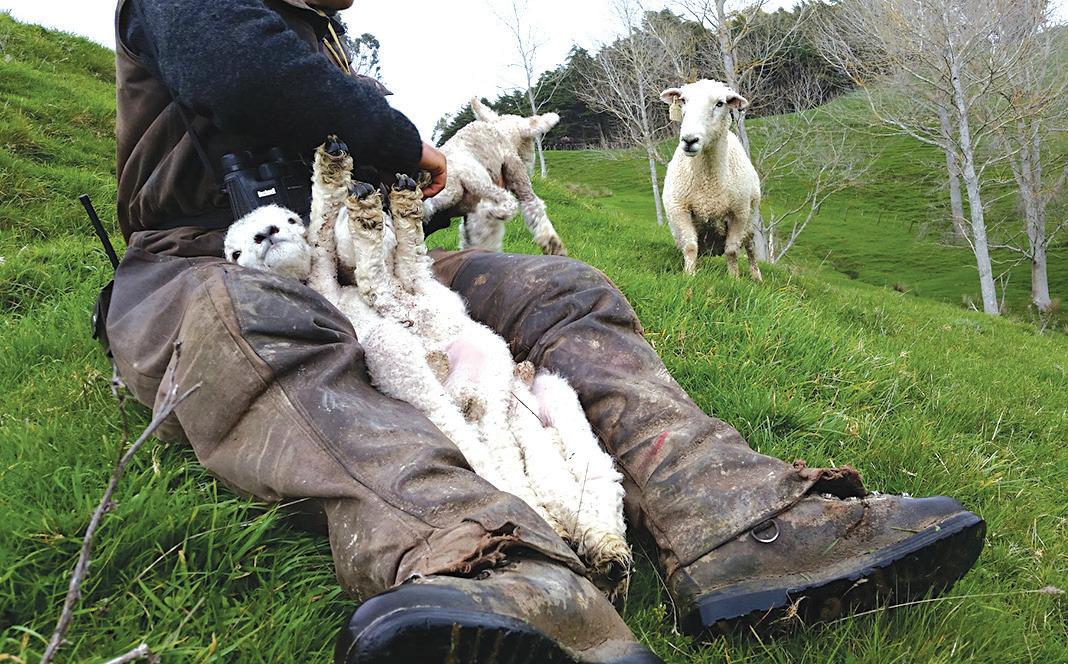
• With a small decline in breeding ewe numbers, down 1.4 percent, 22 million lambs were tailed in spring 2022

• The biggest sheep station in New Zealand is Mt Nicholas station, near Queenstown. It spans 100,000 acres (40,000 Hectares) from the shores of Lake Wakatipu to deep into Southland and is home to 30,000 Merino Sheep and 2,200 Hereford Cattle.
• There are 16,000 sheep and beef farms in the country
• Currently Australia has three times as manty sheep as us here in New Zealand
• Total export receipts for sheepmeat (lamb and mutton) for 2022-23 are forecast to be $4.2 billion FOB, down 12 per cent on 2021-22
• The weighted average farm-gate price for lamb is forecast at $145 per head, or 760 cents per kg, which is 12 per cent lower than in 2021-22, but two per cent above the five-year average
• The annual average farm-gate price for mutton is forecast at $112 per head, or 430 cents per kg, which is 23 per cent lower than in 2021-22, and 11 per cent below the five-year average
• Sheep have very good memories and can remember the faces of at least 50 individual sheep and humans for several years
• Sheep, like goats, have rectangular pupils. Their rectangular pupils allow them to have a 270-to-320-degree field of vision. This means that they can see almost everything around them, except for what’s directly behind them, without having to turn their heads.
Bale Feeders and Trailers

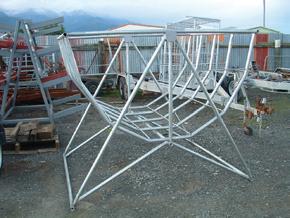

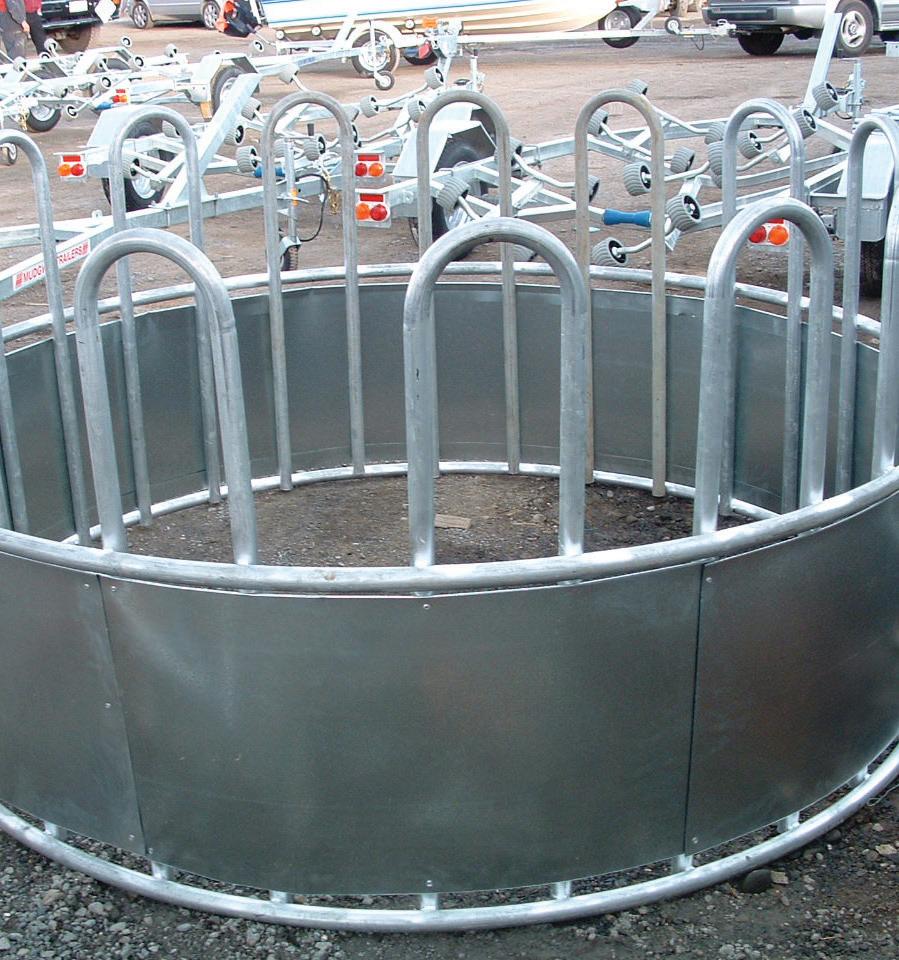
est.1979 66 Beach Road ,Kaikoura
Custom, high-quality, NZ-made products from a small family business Ph: (03) 319 5481 dunlea@dunlea.co.nz w.wwmudgway.co.nz 18 July 2023 Lambing Farming TOP SOUTH MONTHLY
CALVING
Planning and preparing for calving with your farm team will reduce stress when calving is in full swing, and help keep everyone safe and healthy.

Calving is one of the busiest times of the year. Spend time with your team prior to calving to create a plan that works for everyone and the results will follow.
Achieving the best team performance during calving

To get your team on-board and performing at their best they need to:
• understand what you are trying to achieve and why
• understand what is expected of them
• feel respected and valued
• have time to recharge so they can maintain productivity on farm
Some simple suggestions to help build the platform for successful calving
1. Get your team involved - make sure they know why you do
things, how you’ll do it together and what you are trying to achieve. Also, work with them to identify injury risk areas on your farm and potential solutions.
2. Make sure your roster is achievable - Making sure staff have adequate and regular time off to rest and recharge, helps to prevent fatigue which can lead to mistakes or compromise health
and safety. If casual or relief staff are part of your plan, make sure you have access to them when you need them.
3. Discuss and plan any upskilling your team members will need - this includes introducing new staff to your systems and processes.
4. Ensure all the appropriate PPE and tools are available for your

team - this includes having the right footwear for the job with good grip, support and comfort. Also think about th best equipment to use for calf pickup, and for transferring heavy loads of milk and feed to calves.
5. Make sure the whole team is eating well - ensure everyone has 3 nutritious meals a day and access to snacks to maintain energy
RURAL SUPPLIES
levels.
6. Share what goes through your head as a manager - create a list of items you need for calving, and daily/weekly tasks to be completed, so everyone can help achieve them.
7. Hold regular team meetings5-minute stand-up meetings are most useful at this time of year so that everyone gets the same message and any minor frustrations can be dealt with. Use a simple agenda of ‘what happened yesterday’ and ‘what’s happening today’.
8. Work as a team and lead by example
9. Watch for signs of stress and fatigue - this includes in yourself and in your staff. If you do notice any stress or fatigue, be proactive in dealing with it.
10. Keep timesheets for all employees - it is good practice, and you can reflect on them later to plan for next season.
11. Keep talking, coaching, and providing feedback – celebrate success!
Marlborough Des McMillan 027 547 8717 Cnr Grove Rd and Farmar Street, Blenheim
5610
Motueka / Nelson James Marshall 027 706
88 High Street, Motueka
Calving Farming TOP SOUTH MONTHLY July 2023 19
A world of anxiety or a world of opportunity?
DAMIEN O’CONNOR
Two significant events in the food and fibre calendar occurred in June. In the North Island at Mystery Creek we had the National Fieldays, whilst in the South the E Tipu: Boma Agri Summit was held in Christchurch. Two very distinct events in their own right, but focussed on the primary industries that we’re so proud to be a part of.
There were a number of highlights for me at Mystery Creek, in seeing the innovation and enterprise on display. We had the very good news that food and fibre exports have hit a new record this year earning New Zealand $56.2 billion, up from $53.1 billion last year. Thanks to farmers and growers for this excellent result. Encouragingly, the outlook to 2027 has exports continuing to grow, reaching
$62 billion. Yes, I know onfarm costs have been tough, but it’s very positive to see international fertiliser and fuel prices easing. I note one bank economist forecasting on farm inflation to drop to 4 per cent by December. At the Fieldays KPMG published its annual Agribusiness Agenda for 2023. The agenda surveys


agribusiness leaders on their view of the state of play, ranking their priorities for the sector. For the 13th year in a row ‘World class biosecurity’ systems came in at the top. It is also top of mind for me as Biosecurity Minister. ‘Sign high quality trade agreements’ came in at sec-

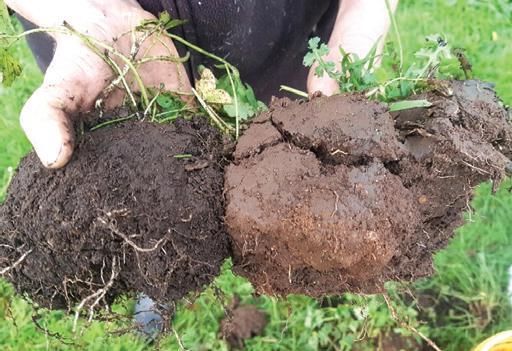
ond again. The UK FTA entering into force at the end of May has been a huge win for New Zealand and the EU FTA will be coming on stream next year, all going well. Entering into the Top 10 (from low priority last year) were ‘Objective assessment of tree planting’ and ‘Invest in resilient rural infrastructure’. Both very topical issues as we progress the He Waka Eke Noa system and help North Island farmers and growers build back better from Cyclone Gabrielle. KPMG took an interesting and refreshing approach this year by also interviewing a cohort of younger emerging leaders to see how their views compared to the ‘established’ leaders of today. They contrasted in areas of careers, climate and people.
Where for instance, the current leadership had ‘Immigration settings’ ranked at 3rd for the established leaders, emerging leaders ranked it at 18th and had a higher priority on developing people. To make a broad generalisation, the Boma Summit in Christchurch, which partnered this year with IFAMA (International Food and Agribusiness Management Association) could be said to represent this emerging set of agribusiness leaders. The commentary from those attending this year’s event was about how young the attendees and speakers were, and how their view contrasted to the more established heads of the sector. Where the KPMG agenda was themed ‘Energising a World of Anxiety’, Boma was focussed on a world of opportunity for food producers in a changing world. These younger leaders see developments in international markets driving change, rather than regulation. They see technology being central to tackling challenges and capturing the market opportunities abroad. Social media, automation of data capture, and a flexible view of land-use when it comes to production were all characteristic of discussions at the event.
As I write I can hear some saying ‘ah the idealism of youth’. To that I quote John Maynard Keynes: ‘the difficulty lies not so much in developing new ideas as in escaping old ones’. Not that this is an old versus young situation. There will always be the bell curve of optimists and pessimists. What I encounter as Agriculture Minister is a new wave of thinkers (and doers) who want to get stuck into the challenges we have, who operate in a media world that amplifies the naysayers. That noise creates anxiety and drowns out those who are getting on with it. I can understand some farmers being anxious about the changing world. I think we all benefit when we are prepared to challenge our own thinking. Our farming history has plenty of examples of innovation and adaptation. In the 1970s the UK entered the common market with Europe, and in the 1980s subsidies were dropped. We overcame these to become more diverse, resilient and camped at the high-value end of markets. What’s essential is that we bring all the perspectives together because there’s great work happening. And I’d recommend getting along to Boma next year.
Got something to buy, sell or promote?
Contact us: sales@nmf.co.nz

20 July 2023 News Farming TOP SOUTH MONTHLY
Farming
Passive agri investment or future grazing

12 Loop Rd, East Takaka





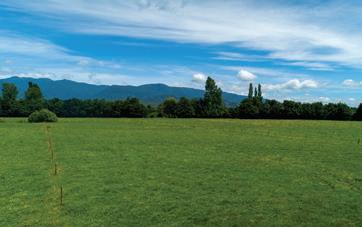
Prime productive land in Golden Bay is seldom available, and even rarer to have no house or high value improvements that you’re paying for - that you don’t necessarily want or require…
We have 84.4 Ha approx. of ex dairy productive river flats, with no houses, so only pay for what you need.
The property is very well appointed with excellent farm shedding including a 6 bay implement shed, 3 bay, and large extra high 1 bay implement, as well as the decommissioned 40 bale rotary dairy shed.

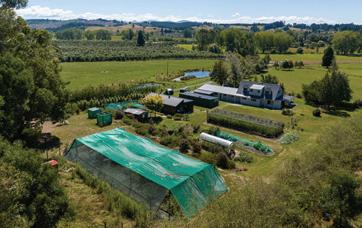
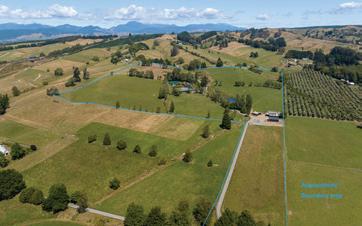
The land is currently leased out to a well-respected local family as a support and grazing block, and is leased until June 2026, for an attractive rate and good return on investment.
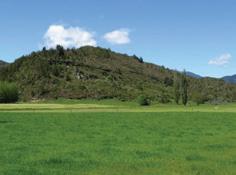

When thinking about investment and especially in the world we live in today, risk factor is certainly a contributing factor in decisions, and I think we can safely say that land would be one of the lowest risk investments out there. Give me a call today to find out more.
For Sale: $2,400,000 + GST (if any)
Toby Randall
M 027 233 9170 toby.randall@harcourts.co.nz
Self-sustainable country living with income
82 Thorn Rd, Dovedale
Sitting on 10 ha of flat fertile land, in a sunny position surrounded by exceptional views out over farmland and the Mt Arthur Range you will find this very well appointed warm 4-bedroom, 2 bathroom family home. Improvements to the home include modernised bathrooms, double glazing throughout, cosy log fire in the open plan main living area with plenty of space and doors flowing out onto the covered verandahs with wrap around deck for those Tasman summer evenings. Out on the land you will find excellent infrastructure including new fences, troughs, new cattle yards, fantastic sheds and workshop, established trees and an orchard just to name some of the features.
If this is all sounding a bit like you; this property certainly won’t disappoint in person and a viewing is highly recommended.
Price By Negotiation Over $1,280,000
Toby Randall
M 027 233 9170 toby.randall@harcourts.co.nz
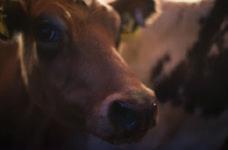


Thinking of retiring?
127 Redwood Valley Rd, Redwood Valley
Looking to downsize, but still wanting a piece of paradise to call your own?
Nestled in the stunning Redwood Valley, this block of land boasts productive flats, rolling fields with fertile soil and natural water as well as Redwood Valley Scheme.


Substantial renovations have been undertaken on the home in recent years, including new kitchen, retrofitting double glazing and some internal layout changes to utilise the most of this 4/5 bedroom homes spaces and the fantastic outdoor areas.
No expense has been spared when it comes to the land either, from fencing, concrete pad Te Pari cattle yards, workshops and implement sheds – it has certainly been done right the first time. Don’t miss your chance to own this beautiful property is such a sought-after location.
Toby Randall M 027 233 9170
toby.randall@harcourts.co.nz





Licensed Agent REAA 2008 Licensed Agent REAA 2008
Licensed Agent REAA 2008 Y o u r L o c a l R u r a l a n d L i f e s t y l e E x p e r t s
Advert Farming TOP SOUTH MONTHLY July 2023 21
Price by Negotiation
The new Firearms Registry
There’s no charge for registering your firearms.
New Zealand‘s firearms registry is now live. If you’re a firearms licence holder, you’re required to provide information about your firearms or arms items to the Registry.
The Registry will help us make New Zealand safer. It will give licence holders more confidence when buying or selling firearms, as the Registry will let you know if you’re dealing with a current l icence
holder and if the firearm has been reported stolen.
The Registry is one of the ways we’re strengthening how we manage firearms in New Zealand. With responsible firearms licence holders doing the right thing and filling in the Registry, it will help keep track of legally owned firearms and help prevent their transfer to those who use them for criminal purposes.


You have 5 years until 24 June 2028 to register your firearms. However there are some circumstances where you are required to provide information for the Registry in a shorter time frame. These are referred to in the Arms Amendment Regulations as ‘activating circumstances’. It’s up to you to keep your information up to date. You can find information on these timeframes at: firearmssafetyauthority.govt.nz/registry
Examples of activating circumstances
Notifying us of a change in circumstances, such as a change of address
What needs to be registered
Non-prohibited firearms including Specially Dangerous Airguns (PCPs)
Restricted weapons
Pistols
Loss, theft or destruction of a firearm
Selling, hiring, purchasing or receiving a firearm
You can register your firearms or arms items on our website at any time. Just click on MyFirearms, the private and secure portal that houses the Registry. Otherwise our Registry and Services team will be available by phone to help during business hours.
Scan QRcode for more information
Importing, exporting or manufacturing a firearm or ammunition
If you’re subject to any compliance or enforcement action under the Arms Act
Details needed to register your firearms
• Type (rifle, shotgun etc)
• Make
• Model
Prohibited firearms and magazines
Major parts Pistol carbine conversion kits
• Action
• Calibre/gauge
• If it has a non-detachable magazine (and, if so, its capacity)
• Identifying marking (serial number)
• A photograph of the firearm (if requested)
Register your firearms and help make New Zealand safer. Applying for or renewing a licence or endorsement
TPP-RegistryAdvertorialPost370x263+AdV2.indd 1 22/06/2023 22:29 22 July 2023 Advert Farming TOP SOUTH MONTHLY
Learning the art of trapping
ELOISE MARTYN
New Zealand is home to many unique and ancient species of birds, frogs, lizards and plants. Our animal and plant life is distinct because we have been geologically isolated for 85 million years since we split from the supercontinent of Gondwana. Many of our species are found nowhere else on Earth and this isolation makes them vulnerable to introduced predators such as rats, stoats and possums.
New Zealand is working its way towards a very ambitious goal of being predator-free by 2050. To be successful it’s requiring new collaborations, innovation and active communities.
Recently a group of year 11-13 students (16-18years old) have had the opportunity to learn about predator control in the form of ground-based, pest-control traplines. A trapline is a route along which a trapper sets traps to catch
predators. Traps are used to target specific pests such as stoats, rats and hedgehogs and they are designed not to attract or harm other species. This type of pest control is vital to ensure our unique native species survive.
“The state of our environment can be overwhelming for us all, our programme teaches our young people that they can have a positive impact on the environment,” explains Rosey Joyce, lead instructor of the Environmental Sustainability programme offered through Whenua Iti Outdoors.
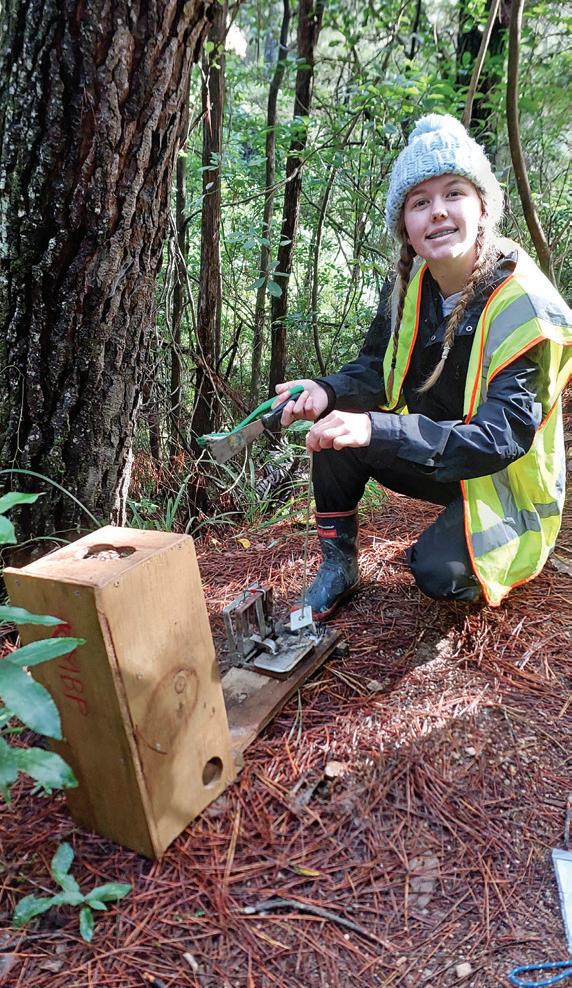
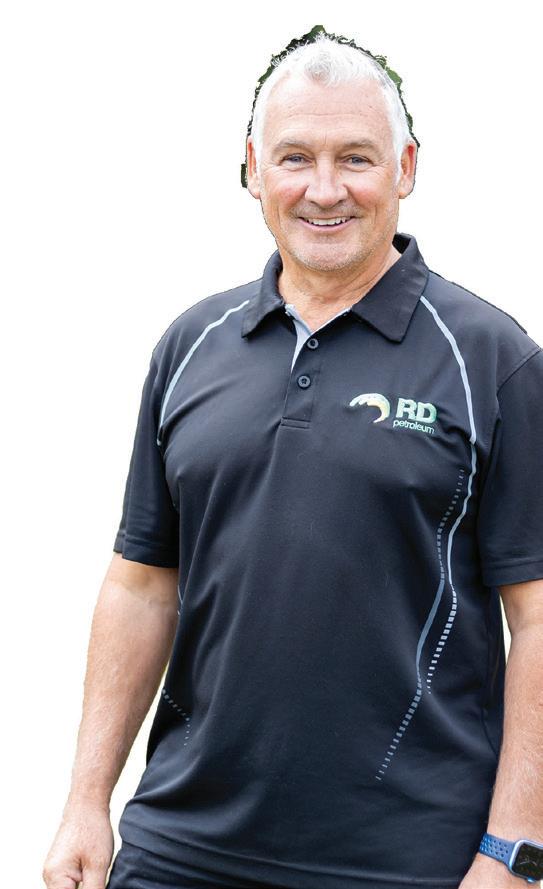
“Majority of the students on the four-week course had never touched a trap a before, so to see them go from no trapline knowledge to competent to the extent some intend to set up their own traps at home in their back yards is really cool.”
Part of the course involves educating the students on the purpose of trapping and understanding animal be-
haviour. Trapping can help save our native species, prevent costly property damage, keep homegrown food and crops safe, prevent an infestation, and halt the spread of diseases by rats. The group also learnt how to not only check the traps but also maintain them. The group has been involved in different trapline operations. They had a great time checking and carrying out maintenance on traplines in the Kaiteriteri Mountain Bike Park as well as time spent at the Healthpost Nature Trust eco-sanctuary on Cape Farewell in Golden Bay. The sanctuary features a predator-proof fence to protect a bird nesting site where rare and endangered species such as pāteke (brown teal), diving petrels and fluttering shearwaters are being reintroduced. “It’s been really cool for us to be involved in different levels of trapping, some have technology that we had not seen before like trail cameras
and the predator-proof fence.” Rosey adds.

“By providing opportunities for students to take their learnings outside of the classroom and into a practical setting, while still gaining NCEA credits, the students get the freedom to connect with the environment and to species that we are trying to protect,” explains Rosey, “They take that sense of connection with them when they leave the course, they feel and understand that they are Kaitiaki - caretakers of the land.”
Whenua Iti Outdoors have also established a community trapline on their 7.5-hectare grounds located in Lower Moutere. “We really want to support other community groups that want to establish traplines and are not sure how to get started,” says Rosey. “We have different traps so we can show people how to use a range of traps, it’s a free resource and we are happy to show anyone who is interested.”
Bulk fuel delivery you can depend on

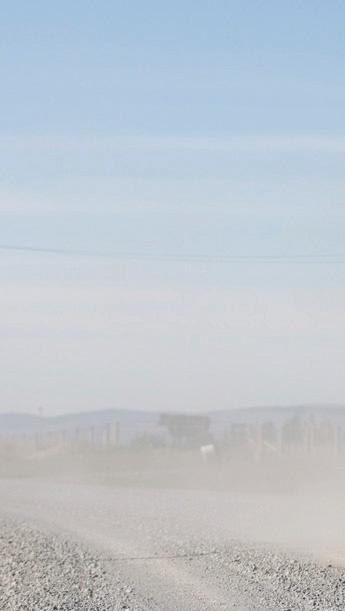






Rural, farm and commercial customers rely on RD Petroleum’s premium delivery service for bulk fuel supply that is fast, efficient, cost effective and delivered on time, every time.
Bulk fuel supply, second to none.
News Farming TOP SOUTH MONTHLY July 2023 23
Benson Haywood Territory Manager
Waimea College’s Cooper Phipps checking a trap in the Kaiteriteri Mountain Bike Park. Photo: Supplied.
HUNTING
Another successful hunt at the Woodie
ELOISE MARTYN
It’s been a tradition for the past ten years and this year was no different with the Woodboure Tavern, in Renwick, hosting a well-received community and family focused Pig and Deer hunt for 2023.


“We always host it on the King’s birthday long weekend and it’s our favourite event to host,” says Stacey Goodwin from the Tavern. “It’s great to see the community come together and for mum’s and dads to take the kids out hunting.
We have some good customers that are keen hunters so it’s neat to continue to support their passion.”
The hunt is well supported by

local businesses and individuals, including the voluntary Renwick Fire Brigade who are hands on helpers on the day.
However, this year there was a major prize up for grabs - a fully kitted out 2008 Toyota HiLux –the perfect beast to go out hunting for your own beast in. Everyone who entered the hunt was issued with a number via a random number generator. The local police drew the draw and the lucky winner, who had headed home when the rain crept in, received a much-welcomed phone call and collected their new Ute the following day.
In pervious yeas the tavern has received around 400 entries, this year with this major spot prize on
the line they received just under 700 entries as well as 138 kids’ entries and 92 teenagers. “We definitely received more entries than expected which was awesome.”
Stacey adds

The competition was broken into sections where kids could enter rabbits and hares, teenagers a pig and a goat and the open adult entries a pig and a deer.
“There’s lots of different prizes and categories such as the heaviest in each section and the person who is closest to the average weight caught on the day,” explains Stacey “Most of us are there not just for the competition but the environment as well, it’s a neat day and people stand around and chat while watching
the weigh ins. We always put on a live band and carry on into the evening.”
“We don’t want the hunt to get any bigger as we won’t fit everyone in the tavern,” laughs Stacey
“And we are not keen to move it
off site, it’s always been at the tavern, and we want to keep it that way. We are very grateful to the amazing staff, family members, and everyone who supports the event it’s amazing to see the community come together.”
Top tips for hunting
• Create your own gear check list and ensure you have everything on the list before heading off
• Always remember to have an alternative communication device, as your cell phone won’t always work when off grid. Alternative options include radios, satellite phones or satellite messenger devices
• If you are hunting with a firearm, you must hold a current New Zealand firearms license, follow every part of the Arms Code, and follow the seven basic rules of firearm safety
• Ensure that you have a permit, or land owners’ permission, to be hunting where you are

• If you are hunting under a permit abide by its conditions
• Take all rubbish out with you
• Have a plan for disposing properly of animal waste; offal and carcasses must not be left behind
• Let someone know where you are going and roughly when you will be back

Export SEriES the indexed rotating clamping system 3 Angle adjustments • High Grade Stainless Steel • Hygienic • Easy Care • x2 clamps included, 1x Wide Clamp & 1x Narrow Clamp Visit scarysharp.co.nz for the full range talk to the manufacturer toll free 0800 175 720
24 July 2023 Hunting Farming TOP SOUTH MONTHLY
The Constant Angle Knife Sharpening System
A happy competitor rolling in with their catch. Photo: Supplied.
Local kids happy with their catch. Photo: Supplied.
A line up of decent pigs entered into the competition.
Photo: Supplied.
Council’s Rural Hub has had a birthday and a complete make-over! This is a designated web space for you, and where everything and anything rural can be found. Here you will find information on some of the main
Freshwater Farm Plans
A lot has happened in the last month.
The Freshwater Farm Plan Regulations have now been notified and commence on 1 August 2023. Council staff have been working hard to dissect them, so they can then be presented to you in an easily digestible form.
Freshwater Farm Plans (FWFPs) are anticipated to be rolled out starting 1 January 2025. Following that, farmers and growers will have 18 months from when their Freshwater Management Unit is ‘switched on’ to submit their plans for certification. Tasman District Council will be working closely with industry-led programmes to understand what they can deliver and how local catchment context and the

issues you may need to know about including Freshwater Farm Plans (FWFPs), intensive winter grazing, stock exclusion, N-cap reporting, and consenting needs. In time, the Rural Hub is where Council will make the
detail of the regulations will be included. Where farms in the Tasman district have existing Farm Environment Plans, or are working with an industry assurance programme, we will work with the landowner and/ or industry group to ensure there is an integrated approach taken. This will ensure that any good planning that is being undertaken on farm is added to, rather than overridden when it comes to incorporating FWFP requirements. We want to build on, rather than duplicate, effort.
Last month we introduced Council’s Catchment Facilitators, Kat Bunting (Mohua – Golden Bay), Brigid Graney (Waimea), and Helen Forsey (Motueka/ Moutere). Their roles have been made possible through
Stock exclusion and Low-Slope Mapping
The feedback and questions Council staff have received from our farming community over the past year have made it very clear that the stock exclusion rules have proven to be the most confusing.
If you:
• Have dairy cattle or pigs they must be excluded from lakes and wide rivers from 1 July 2023.
• Have beef cattle and deer intensively grazing, (breakfed, fed on annual forage crops or on irrigated pasture) they must be
excluded from lakes and wide rivers from 1 July 2023.
• Have dairy support cattle they must be excluded from lakes and wide rivers from 1 July 2025.
• Have beef cattle or deer, they must be excluded from lakes and wide rivers on areas of your farm identified as ‘low slope land’ from 1 July 2025.
Beef cattle and deer farmers should check the Low-Slope Map prior to taking any action, as their land may be excluded from the stock exclusion
necessary information needed to complete FWFP s publicly available for farmers and growers to freely access.
The Rural Hub is where Council through the Catchment Facilitators will
external funding and will provide the much-needed additional staffing to support the implementation of FWFPs across the district. The Catchment Facilitators are responsible for ensuring Council is ready, and as much information as possible is made available for the farmer/grower to use in the development of their plans. They will be working with catchment groups, industry groups and/ or individual landowners. A flexible approach will be taken to allow for differences within each catchment area. The Catchment Facilitators’ will be able to assist with the writing of freshwater farm plans should this be needed. Their support is provided at no further cost to the farmer/grower.
rules. We invite you to head on over to the Rural Hub website page, where we have simplified the rule, added in definitions, plus a User Guide to the Low-Slope Map.
To access the Rural Hub, please go to the TDC website and click the yellow Rural Hub tab or go directly to www. tasman.govt.nz/myregion/tasman-rural-hub/.

If you are unable to do this, please contact us at ruralinfo@tasman.govt. nz and we will get the information out to you.
keep you up-to-date with news and events, and where you can get further support and advice. You can access the Rural Hub via the yellow tab on TDC’s main website.
N-Cap reporting – Due 31 July 2023
Reporting synthetic nitrogen fertiliser use – Dairy Farmers Only
On 1 July 2021, under the new Essential Freshwater package, the Government introduced a cap on the application of synthetic nitrogen fertiliser for land grazed by livestock. To comply with the rules, dairy farmers are required to report their synthetic nitrogen use for the twelve-month period from 1 July to 30 June in the following year. So, for the 2023 recording period, this is from 1 July 2022 to 30 June 2023. This report is to be submitted by 31 July 2023.
The three nitrogen-use reporting tools that you can choose from to record and submit your synthetic nitrogen use are:
1. Ravensdown HawkEye - www.hawkeye.farm
2. Ballance’s MyBallance - ballance.co.nz/myballance
3. The Regional Sector’s N-Cap - n-cap.teurukahika. govt.nz
There have been a number of improvements made to the reporting tools from last year, however, if you have any issues or difficulties reporting your synthetic nitrogen use, please contact Council at ruralinfo@tasman.govt.nz

Advert Farming TOP SOUTH MONTHLY July 2023 25
Telling the story
GARRICK BATTEN
The classic example of farmers not controlling the narrative, to continue the jargon in last month’s column, was how government policies about climate change are decimating agriculture.
Government’s decision to lead the world and stop global warming chose reducing emissions as the method. So the ruminant methane from farms of a minor voter group could be rapidly reduced compared with the much more important CO2 emissions from transport, energy and manufacturing produced by the majority. Climate change policy was politically simple. Reduce methane by reducing animal numbers, and their grazed area by planting pine trees.
Everyone else kept repeating the mantra that agriculture produced more than half our emissions so farmers should reduce them because they could. That is not to say they do not have a role in that. But reducing food production, export income and increased food prices ignored the downsides. As did the negative effects on rural communities and jobs
This policy attracted lobby groups like Greenpeace who have always hated dairy cows, and other environmental lobby groups with agendas of fewer animals and retired grazed land. Their narrative supported government policy with funded enthusiasm unleavened by reality. Farmers endeavoured to show methane had no more warming from a stable and even declining number of ruminant animals, compared with increasing long-life CO2 emissions. But reducing methane, however measured, was the opportunity to rapidly
meet national political, aspirational and legal commitments without upsetting the voters.

The relative immaturity of NZ has hindered farmers in influencing these narratives. In UK and Europe for example, most people accept farmers as a critical part of society, providing food and caring for the countryside. So they support farmers in various ways. NZ still has a colonial mindset that farmers are environmental vandals. So the government capitalised on that and blamed them for global warming with taxes and penalties, both directly, and indirectly with a tsunami of regulations and administrative requirements. For the same objectives supported by UK and Europe urban people. The fact that the government has used that the majority do not appreciate our farmers’ role in both producing food, environmental management and increasing export income is a clear example of farmers inability to tell their story well enough to convince the country to grow up.
Farmer communications were channelled into hasty, ill-timed consultations with government after implementing policy decisions made before the necessary consultation. But farmers should have also been with communicating with the public that influence those political decisions presented as options. It is not too late. An open door is how voters now rate high food costs as being twice as important as climate change. Another would be that to continue their cafe culture and each year drink $2,000 worth of coffee each needs overseas funds earned by farmers’ meat and fibre products to pay for those coffee beans. And milk, if only to make a latte.
Regulation fatigue for farmers continues
ANNA BENSEMANN
In a world of fast-moving changes to laws and regulations, keeping up with the latest on-farm requirements can be daunting and create headaches for farmers who prefer the wide-open farm paddocks to days in the office. While farmers are subject to the normal financial, banking, and tax obligations that any business faces, the agricultural sector is also burdened with an overwhelming list of requirements to meet environmental compliance. Significant changes in regulations to manage freshwater quality in recent years have brought potentially profound alterations to day-to-day farming activities. Land conversions, winter grazing practices, and the need to fence off waterways have all been incorporated into freshwater management regulations, often at a financial cost to farmers. Farmers fortunate enough to have areas of native bush, picturesque wetlands, or other natural features
within their farms encounter challenges related to protecting these spaces. Measures imposed through district and regional planning documents are often generic and determined by individuals who may not have even visited the areas. This lack of flexibility places compliance burdens primarily on farmers, making it difficult and cumbersome to effect necessary changes when inaccuracies or unfair mappings occur.
The recent reform of the Resource Management Act (RMA) introduces further uncertainty into farming regimes. As the legislation is implemented, farmers may face new consultation requirements and legal testing through the courts. These changes may bring additional complexities and challenges, including the need to engage with a broader range of stakeholders and potential legal uncertainties during the interpretation and application of the new laws.
To mitigate these challenges, farmers must stay informed about the
evolving regulatory landscape, actively engage in transparent consultation processes, and seek legal guidance when necessary. Collaborative efforts within the farming community, such as knowledge sharing and industry discussions, can help navigate these uncertainties and advocate for necessary improvements or clarifications in the reform legislation.
The farming sector operates within a complex web of regulations, which can create significant burdens and challenges for farmers.
The recent RMA reform legislation introduces additional uncertainties that must be carefully navigated. By staying informed, engaging in collaborative efforts, and seeking professional advice, farmers can adapt to regulatory changes while continuing to be stewards of the land and producers of high-quality agricultural products.
Anna Bensemann, Senior Planner, Baseline Group Marlborough
Ph: 03 578 7299, E: anna@blg.nz


National’s emissions pricing plan gives time to get system right
DAIRYNZ

Recently the National Party announced its plan to delay agriculture emissions pricing until technology is in place and targets reviewed, is a step in the right direction, according to DairyNZ.
If a New Zealand government is going to price agricultural emissions, then the pricing system must be fair and practical for dairy farmers.
DairyNZ will work with any government that is focused on reducing on-farm emissions and finding ways to help farmers achieve that, in a practical and sensible way.
“We know that putting farming into the Emissions Trading Scheme will deliver poor outcomes for farmers, New Zealand and global targets if it exports production to less efficient countries,” says DairyNZ chair Jim
van der Poel. “Both technology and targets are an important part of getting a system right and ensuring agriculture plays its part. Pricing was looked at to facilitate the necessary behaviour change. Pricing will only achieve outcomes if cost-effective tools and technology are available.
“Our gairy farmers are already world leading – because of that, we need to continue to invest in new technology and mitigation options to hold that position.
“Before any emissions pricing system is introduced, there must be clarity about emissions targets and how any pricing mechanism will work, along with how all these factors work together. We must get the details right.” Along with being fair and practical for farmers, any pricing system should only generate enough revenue to enable dairy
farmers to meet reduction targets – via incentives for reducing emissions on the farm. DairyNZ continues to research tools and technologies to support dairy farmers to reduce emissions. Science and information have advanced rapidly in recent years, with technology showing promising ways for the sector to reduce environmental footprint and stay internationally competitive. “We stand by the principles of a practical, fair and cost-effective framework for reducing agricultural greenhouse emissions at farm level and an alternative to the New Zealand Emissions Trading Scheme,” Mr van der Poel says. “We will support a pricing proposal that meets these principles and gives farmers access to the tools and technologies they need to reduce on-farm emissions.”
26 July 2023 News Farming TOP SOUTH MONTHLY
OPINION M2022 MWPROMO 06/22 SAVE
WINTER SALE FIRE & ECO FLUE PACKAGES SAVE $500 WINTER & ECO FLUE PACKAGES 128 Tahunanui Drive, Tahunanui, Nelson Ph 03 548 5742 or email office@pmfireplaces.co.nz www.pmfireplaces.co.nz Conditions apply. Sale ends 31 August 2022 and is only available while stocks last. Freestanding fires Insert & Built-In fires ECO flue systems Wetbacks for water heating Parts and accessories Installation and servicing WINTER FREE FLUE SPECIAL On selected Masport and Metro Wood Burners While stocks last, ending 31 August 2023.
$500
WEST COAST
Sam’s a winner in the shearing stakes

ELOISE MARTYN
“Click go the shears boys, click, click, click,” according to the old song of yesteryear. And if anyone has been keeping the shears ‘clicking’ over the past half-century, its Sam Win of Reefton.
My knees are getting knackered and me body’s telling me it’s getting harder,” Sam laughs.
“I thought I might have stopped by now, but I still enjoy it so while I can I’ll keep pottering away.”
Sam’s father was a shearer and Sam, the middle child in a large family of 14 kids, learnt to shear helping his father.
“It’s a hard job to learn,” Sam explains, “iIt’s very painful on the body when you learn, the pain you go through tests you mentally and physically. Everything has to work together – the sheep, the equipment, the shearer. It is a bit of art but once you master it you’re away.” And with Sam’s newly learnt skill he was away.
“There were times where I had more than one job, there was a period where I worked at the mill and would get home around 4pm have an early tea and then go and shear for a few hours,” says Sam “Shearing was a pretty hard juggle with family life but it worked, I did the rugby thing with both our boys and the money for shearing was stable and above average.”
Both Sam’s sons, Aaron and Jason are capable and passionate shearers. Sam and son Aaron have shorn together in Norway with some days dipping below 40 degrees. “It was a wee bit nippy,” quips Sam.
Sam and son Jason have had the opportunity to go head-tohead in competitions as well as shear against each other in the sheds for a number of years.
“It was real privilege to shear with and against Jason. He and I would be going sheep- forsheep days on end and somewhere amongst it all it came to a stage where he was beating me, and I hadn’t been taking it easy on him -, so I was pretty proud.”
Shearing has taken Sam all around the world. He’s had
Dairying at Cape Foulwind is a challenge

John Milne and wife Jo-Anne have farmed at Cape Foulwind near Westport for the past sixteen years. Originally from Taranaki, John shifted to the Westcoast with his family as a young boy. The Cape Foulwind climates challenging and although they get regular rain and have 2.2metre annual rainfall, pasture dries off by November-December most years impacting on summer production. Previous owners flipped the Pakaihi soil enabling moisture to drain in high rainfall conditions but now the flip side is summer dry. An upside to the flipping is we can utilise the pastures a lot better.
ferent crops but not many can survive the very windy conditions of the Cape,” John says. He also staggers the crops which are planted from 20th September, ready for the summer dry late December.
“The coming season is likely to be a financially difficult because of inflation and steep cost increases, but a positive is, the predicted El-nino is usually wetter on the coast than for east coast farmers.”
“Westcoast farmers have had plenty of practice at managing spending in tough years.”
stints in England, Norway, Italy and Australia.
“I enjoy travelling for shearing we have seen some cool places and people,” says Sam .
“One highlight for me was a Norway trip where Gail, my wife, managed to get time away from her work nursing and came along too. She cooked and ‘rousied’. It was a great trip.” Getting learners going is something that Sam is passionate about. “
We actually had a learner on today. He put through 54 and was in so much pain, I said ‘mate if you can get through the pain barrier you will be mentally conditioned to do any job in the world’”.
“I’ve seen a lot of people walk off the job due to the pain and the industry is struggling to get workers,” says Sam. “Lots go Aussie, the land of milk and honey, so it’s important we help those who are learning. Once you get past that physical pain you can actually put in a very hard day’s work day after day for months without burning out.”
“There’s not many jobs like shearing,” explains Sam “I love all the behind-the-scenes stuff, you get to go to some amazing places, meet some neat people, have a bit of laugh while working hard. I feel very lucky that I can still keep doing what I’m doing.”
John and Jo-Anne winter 300 Jersey cows and milk 290. They find Jersey’s suit the conditions at Cape Foulwind. They calve early around 20th July and start them on once a day for the first month, then three milkings over two days until Christmas or New Year when they go back to once a day until they dry off in June. This year their herd has produced 415MS per cow over 370 milkings which works out to 1000ms per hectare. John continually works at making efficiency gains. He plants swedes or rape for his winter crop then plants 6 ha Maize for its deep root system as summer supplement.
“We’ve trialled a number of dif-
Over the last three years the Westland Milk Products payout has been very good. Farmers will have used their pay out to catch up and reinvest in the farm re-grassing and other maintenance. John predicts this season most will hunker down until costs and pay out improve again.
“To quote John Key, recessions come and go, so it will come right again as it has in the past,” John said.
A concern John has for the future of the dairy industry is attracting young people into the industry. Current attitudes toward dairy farming and agriculture in general put them off an industry with good opportunity.
“There is a market for dairy products it’s a highly nutritious protein which is important for growing healthy people.”
Suppliers of all grades of industrial and household coal
• West Coast sub-bituminous coal with low ash, low sulphur and clean burning qualities
• High grade West Coast bituminous low ash coal

• Premium grades available for your boiler or multi fuel burner
• Bagged coal from 20kg to 1 tonne
• Bulk deliveries
• Coal storage in the Canterbury region for continuity of supply

Give Mark a call on 027 531 0998 for a competitive price to have your coal delivered direct from our mines to your place.
Phone 0800 110 602 Email mark@birchfieldcoal.co.nz
www.birchfieldcoal.co.nz
West Coast Farming TOP SOUTH MONTHLY July 2023 27
Sam Win, Reefton’s living legend, doing what he does best.
Photo: Supplied.
BARBARA STUART
Tensions run high at Takaka River Care Meeting Golden Bay farmer new Chair for LIC

CHERRIE CHUBB
President Golden Bay Federated Farmers

Gravel build up in local rivers and the subsequent heightened risk of flood damage were the central concerns of farmers and landowners at the Takaka River Care meeting. Frustrations have built up over many years and TDC came to the meeting well equipped with staff, Ward Councillors, a Community Board representative and the CEO.
David Stephenson, Operations Manager for Wastewater, Rivers and Stormwater, talked about some of the
Locally Owned & Operated

issues and constraints faced by council and gave a breakdown of the data on which decisions like gravel extraction are made. He explained that recent flood events in the area have caused significant damage and that the remediation work has put pressure on council’s forward works programme. Information presented indicated that while most of the Takaka River is stable, areas of buildup are occurring to the extent of 4000m³ a year. The universal gravel extraction consent is calculated against historical long term averages. For upstream of Paynes Ford that is 1000m³ extraction annually and below Payens Ford it is calculated on maintaining the ‘envelope’ as gravel acts like a slug of material moving on a conveyor belt. It was noted that work needs to be well considered to avoid adverse effects, such as creating issues further downstream. In other rivers in the district, excess gravel removal has resulted in effects on groundwater and lowered bed depths, risking bridge footings and foundations. This has led to council taking a cautious approach.
Concern was voiced at the meeting over the large gravel beaches built up in the lower reaches of the Takaka River and the risk of flooding to the township. Council explained that its responsibility is on maintaining stable rivers and avoiding erosion, not on protecting properties from flooding, which is a popular misconception. The risk of flooding was acknowledged and a refined flood modelling report is due later in the year. Attendees made it clear that they were very frustrated by council processes and felt that council was not hearing their concerns. Council staff have therefore undertaken to work more closely between departments to increase flexibility and efficiencies and will work with individual landowners on their specific concerns.
Attendees were reminded that they have influence on the Long-Term Plan (LTP) currently being drafted and were encouraged to do this by making submissions and through lobbying their ward councillors. Federated Farmers is making submissions to the LTP and the Tasman Environment Plan, on behalf of its members- advocating for the recognition of the importance of river works to both individual property owners and the whole district and calling on the council to protect vital infrastructure and the township.
BARBARA STUART
Recently I tracked down Corrigan Sowman by phone to ask about his appointment as Chair of the Livestock improvement Corporation (LIC) while he was busy shifting cows.
Corrigan and his wife Ruth (along with their two sons) are part owners of Uruwhenua Farms, a 400ha family-owned dairy farm in Golden Bay. He’s been a part of the dairy sector since graduating from Massey University firstly as a consulting officer and farm consultant in Canterbury, before returning to the farm in 2008. Off-farm Corrigan has been a chair of SIDE, a director and chair of SIDDC which operates Lincoln University Dairy Farm, and deputy chair of the DairyNZ Dairy Environment Leaders program. He is also a Kellogg Rural Leader, 2019 Nuffield Scholar and 2021 graduate of the Fonterra Governance Development Programme. Therefore, he’s a well-qualified leader.
Also, a member of the Fonterra Sustainability Advisory Panel, a group providing independent advice to the Fonterra senior management team and board. Corrigan was elected to the LIC Board in October 2022.
“I feel very privileged to have the opportunity as future chair of LIC to be helping to guide our sector through a challenging time. The problems we face are complex but with good research and management of data, we can help farmers at the coal face meeting future customer expectations and that’s a what I care about,” Corrigan said.
Organic farming trials show promise
Organic vegetable producer Dom Ferretti and his partner Jeanette are passionate about growing vegetable crops on their Mt Heslington property near Brightwater.
At a previous property they had purchased compost for the market garden. On taking over the Mt Heslington property they found benefit from utilising a green cover crop instead. The purpose of the trials was to prove a green cover crop is cost effective with potential for uptake and benefit for other commercial growers. This led them to find out if green crops capture enough nitrogen for growing vegetables. Partnering with Sjef Lamers, of Sustainable Nutrition they set up trials for the 2022-23 growing season.
For the three trials they used three types of green crops. The first plot was tic bean legumes for
fixing nitrogen, the second was a mix of tic beans and oats and the control trial was bare fallow soil. The crop of choice was potatoes to make it easy to measure yield. Findings of the project over a two-month spring growing period showed both green crops captured 10 tons per hectare of biomass. The equivalent of seventeen tons per hectare and a saving on transport, spreading plus 289kg of nitrogen per hectare fixed in the soil. The crop was lightly tilled into the soil and planted out with the potato crop.
When harvested April 2023 results were encouraging with short- and long-term benefits. The potato yield was better for both legume and mixed species trial, capturing nutrients and carbon, suppressing weeds, supporting the biology and soil. The trial also showed potential for growing brassica crops under sown with clover to fix more N.

0800 542 383 Dean 027 431 4090 Ben 027 571 6003
• GRAS S HARVESTING • BALEAGE • HAY • PIT SILAGE • GROUND WORK • SPRAYING • AIR SEEDER DIRECT DRILLING • MAIZE PLANTING & HARVESTING • EARTHWORKS • CARTAGE • SITE WORKS • DRAINAGE Paul 027 422 5893 Phil 027 372 9864 accounts@lesliecontracting.co.nz 28 July 2023 Tasman Farming TOP SOUTH MONTHLY TASMAN
BARBARA STUART
Organic vegetable producer, Dom Ferretti discusses green cover crops trial results.
Photo: Barbara Stuart.
TASMAN

Branching out
FROM PAGE 1
ELOISE
MARTYN
It’s a big change to branch out from a career in education, as a schoolteacher in Auckland, Whanganui and London, to an orchard supervisor in Brightwater. But Sam Boardman, supervisor at Willisbrook Orchard Brightwater, has never looked back.

“I came to the area around three years ago on a house-sitting stint, I had no plans to stay,” he says. “I took a seasonal job for the few months I was going to be here and thought I was just another kiwi doing a fruit picking stint.”
Sam didn’t come from a rural background and had no prior orchard experience, yet he found a genuine passion for the industry and is now pruning towards his fourth apple harvest. “I’ve learnt so much yet there is still more to learn, everything is constantly changing, and I really enjoy that.”
The orchard is around 80 hectares in total, with approximately 45 of that in apples and the rest kiwifruit, however Sam’s role is dedicated to the apple side of the business. There are five main varieties on the property- envy, jazz, sonya, breeze and gala- which after harvest are all transported to Stoke where they are graded, packed and then exported. The apples are exported to places such as Asia, Europe, China, Vietnam, and
Regenerative farming
BARBARA STUART
them are back for their nineth and tenth harvest.”
The first step before pruning begins is an important and thorough pest and disease check. “We are always on the lookout for anything that is going to harm the leaves or the trees,” Sam explains.
“Pest and disease control is crucial to producing high-quality fruit needed for a decent financial return, it’s also vital so that we can continue to have access to the overseas markets.”
Roger Nott smiles wryly when he hears the modern-day talk of regenerative farming.
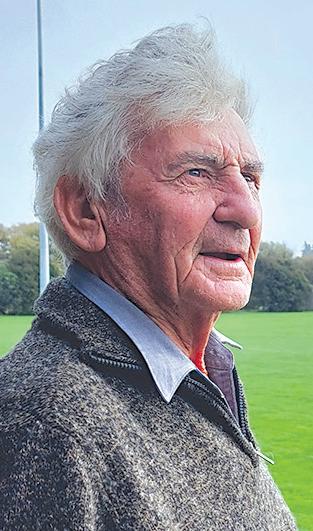
Roger and his wife Kay have been using regenerative farming methods for more than 50 years at both their 500 acre Dovedale Valley sheep farm and prior to that at Pigeon Valley.
Valley.
Eventually, he sold that and bought his next 150-acre block in Dovedale, adding to it over the years.
“We ran 600 ewes and grew tobacco until that was reprogrammed. Then Roger Douglas hit, forcing me back to shearing and building to pay off the land,” he laughs.
the UK.
Pruning at the orchard is a big job, they start in June and finish in September before the flower buds begin to swell. Pruning apple trees concentrates the amount of food and energy the tree has available for growing blossom and fruit, rather than producing too many branches and leaves. Winter pruning also spurs vigorous growth and all pruning at the orchard is focused on allowing the tree to get optimum light. The pruning is done by RSE workers, yet Sam enjoys joining in.
“I like using the tools, apple picking is just hands and bags, it’s nice after harvest to move into a different stage of the process,” adds Sam.
The RSE workers are all from Tonga and majority of the group come from a group of small islands in the central part of Tonga named ‘Ha’apai’.
“The guys are great; they are good workers and some of
Many importing counties such as Taiwan, China, Japan, Thailand and India have zero tolerance polices when it comes to pests and diseases. Some common pests to apple trees here include Codling Moth, Leafrollers and Black Spot (scab), which is a common problem in all regions. “We spray all year round, but our biggest spray is in spring when everything starts to come to life.”
“Every season sees new challenges and surprises, especially when talking about the weather.”
Sam also says the work can be physically challenging at times but that’s something he enjoys, which is good news considering our region is responsible for 15 percent of New Zealand’s total apple export.
“It’s a satisfying job to be able to see the results of our hard work, from pruning to the first bud, to the last apple picked, its validation of a job well done.”
“I’ve always operated a regenerative system,” says Roger. “Over the years I’ve fenced off creeks and retired land for biodiversity values and some forestry. I’m not against caring for the land and being a good caretaker, but it frustrates the daylights out of me that our good stewardship for the past 50 years has been ignored.
“Our creeks still have life in them and now, we are to be audited and told how to farm by well-intentioned people who’ve not walked a single mile in anything like our shoes. In fact, it’s heart-breaking.”
“We’ve raised our five kids and did all the things that are now held up as regenerative.” Our children and grandchildren attended the local school, and the area is home to their family.”
Choose how you remember the life of your loved one by working with our friendly and experienced team.
 Roger Nott
Roger Nott
These days Roger and Kay are legally retired but still active, their grandson now leases the farm. They tried dairy support but prefer to be a sheep and beef operation, Roger says, it’s easier on the land. He worries about the future for the next generation of sheep and beef farmers given the way things are these days.
He says new government farm and freshwater planning rules are just another cost to landowners and council ratepayers for very little gain to the land or economy.
Roger was originally raised on his parents’ farm in the Kenepuru Sounds, when the farm was sold, he went shearing to get a stake together and buy his first steppingstone 50-acre property in 1969 at Pigeon
“The next generation can’t afford to buy family farms and if we sell the land, the asset is gone from the family. It’s sad to see farmers and their food producing knowledge is being lost and undervalued when the industry is an asset to the country’s economy,” exclaims a frustrated Roger.
“Times are extremely tough for the sheep and beef sector, and their loss a risk to whole communities and schools.”
Celebrating life your way
are available 24 hours PH 544 4400 24 Champion Rd, Richmond wrfs.co.nz Tasman Farming TOP SOUTH MONTHLY July 2023 29
We
Sam Boardman in front of recently planted Red Sonya apple trees. Photo: Supplied.
Sun shines on local bull sales


ANDREW RITCHIE
The horizontal rain and howling winds from last year was replaced with sunshine for the duration of the 2023 bull sales. An altogether more pleasant environment for the serious business of bull buying.
At Wakefield the Martins sold thirty angus bulls for an average price of $8,433 with a top price of $20,000. Four Herefords sold for an average of $4,625 and a top price of $6,000.
For the second year Blenheim Bull Sale was held in the luxurious surroundings of the Marisco Winery at Leefield Station in the Waihopai Valley.

The bulls from Leefield and Blackknight were fenced behind a single hot wire in front of the winery. A testament to the docility of the bulls. Each bull was displayed on two large video screens as the auctioneer
worked through the catalogue, while the buyers sat in comfort on straw bales in a warm shed. The marketing skills of winery staff were much in evidence.


Leefield sold sixteen angus bulls for an average of $5,843 and they had a top price paid of $13,500. Blackknight Angus sold twelve bulls for an average of $6708 and a top of $9500.
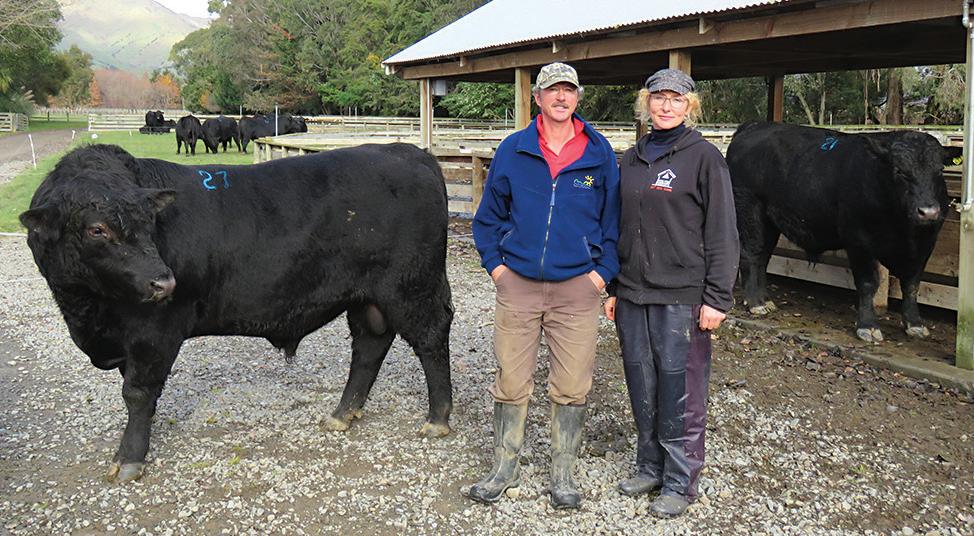
On the same day Taimate Angus and Burtergill South Devon held their sale at Ward.
Unusually for this sale the weather was warm and sunny. Taimate sold eighty bulls through the ring for an average of $11,300 and a top price of $21,000. Burtergill sold six bulls for an average of $7,583 and the top price was $12,500.
The next day the sales team headed to Clarence Bridge for the Woodbank Angus and Matariki Hereford sales. The next generation of cattle breeders
are ably carrying on the legacy of these two famous studs with Ben Murray at Woodbank and Jack Murray at Matariki. The following generation were all lined up seated beneath the auctioneer’s box awaiting their turn.
Matariki sold fifty Herefords for an average of $8,930 with the top priced bull going for $17,500. Woodbank sold fifty-nine bulls for an average of $9,779 and a top price of $42,000. Choosing a bull is made easier by the array of figures presented with each animal showing every possible measurement taken throughout its life and these figures are then compared with the average of the breed. Bidr operates a live on-line method of bidding for those unable to attend, although nothing is better than viewing the bulls in the paddock.
Growing garlic and shallots a family business

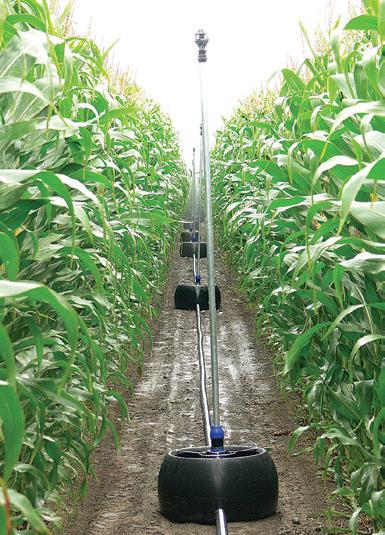

BARBARA STUART
In 2003 Robert and Alan Harrison-Jones took over the family business Garlico from their father, Peter. They grow, harvest and market the best allium crops in Marlborough’s Awatere Valley. Annually they grow 25ha of garlic, 10ha of shallots, onion’s for seed and keep bees for honey and pollination. The annual cycle is always busy. Garlic harvest finishes by the end of January, they are then onto onion seed harvest which entails the seed going into a drier. This is followed on by digging and drying the shallots for three weeks before they are harvested.
“We also do vineyard contracting and development work, drilling and heading for barley and wheat,” says Robert. This annual cycle keeps the brother’s machinery busy all year round.

They negotiate and lease land and every block’s prepared and soil tested. Mid-winter garlic is planted, they are full on with vineyard work during August and September. Then the shallots are planted in September.


“If a stranger coming into the yard wanting to talk to the boss, I just send them into the shed for one of our staff to help them. Maintaining a happy work environment is pivotal, we have six permanent staff in the shed and three on planting and tractor work, plus casuals in the busy season. We couldn’t do all this without our loyal staff who enjoy the business too.”
Robert’s wife Vicky, takes care of anything to do with Assure Quality and in the busy season their adult children pitch in if they are around. The whole family is involved. “We are proud to be second generation garlic growers,” Robert adds.
Irrigation NZ Certified Designers • Pumping & Filtration • Vineyard Irrigation • Rural Water G RA PES W ANT E D All varieties considered Competitive rates | Favourable terms | Great team Viticultural suppor t and exper t advice provided Contact Cleigh ten.Cornelius@accoladewines.com 03 520 6011 Ta e e adv t e. 30 July 2023 Feature Farming TOP SOUTH MONTHLY marlborough
Garlico owners Robert and Alan Harrison Jones. Photo: Supplied.
Ben and Nadine Maisey of Blackknight Angus. Photos: Andrew Ritchie.
marlborough
Enhancing soil health aim of direct seed drilling

TONY ORMAN
Marlborough born Matt Ryan and his wife Pip have an innovative system of direct seed drilling and planting multiple seed species between vineyard rows with their imported drill from France.
“Basically, it’s about maintaining and enhancing soil health under the vines and activating soil biology between the rows,” he explains. Eight to ten seed species comprising mainly a mix of flowers, legumes, cereals, brassica and perennials create a continual soil benefit with their root structure.
Matt cites a Seddon vineyard where organic matter has already increased from 2 to 6 percent and trending upwards and more so, if the seed drilling is repeated. The principle aspect is the ground is not cultivated thus minimising the release of carbon. With no soil disturbance the soil structure is maintained and there is no unnecessary loss of quality or moisture.
The seed mix can be grazed by
sheep in winter, or it can be left to break down as organic matter for the soil. If it’s not grazed, then the course is to let it seed to regenerate, crimp roll it when about a metre high as additional organic matter on the surface, thus avoiding continual mowing.
“This process retains soil moisture making it far more user friendly plus enhanced soil health. You can then either redrill or just let the seed naturally restrike.”
The environmental benefits long term are an increase in soil structure which also increases water retention, thus preventing excessive runoff and thereby resulting in a better use of rainwater.
“Word gets around and as the benefits get passed around and known, more and more vineyards are looking at this regenerative style,” says Matt.
Matt brings a strong rural background to his seed drilling operation. His father was a sheep and beef farmer and on leaving school, Matt immediately went rural ,doing farm
labouring before setting up agricultural contracting focusing mainly on hay making and silage. He bought land, developed a vineyard at Raupara then sold that, shifting to Murray’s Road. He did fencing, tractor driving then got into seed drilling. In 2008 he shifted slightly into direct seed drilling, buying his own drill. For three years he was contracted to drill at Bankhouse for a government funded bio-fuel project but that was canned with a change of government.
Based in Marlborough he did bulk work at Reefton seed drilling for dairy farm winter crops such as swedes. In 2021 he saw an opening for regenerative planting of winter and summer crops in vineyards. Unfortunately, the drills were a shade too wide for vineyard rows but purchase of a seed drill, narrow enough to do vineyard rows from France was made. Is it organic?
“Yes, it’s pretty much organic, perhaps better described as holistic with no synthetic fertilisers being used,” Matt replies.
Is HWEN a dead duck?
Farmers are cautiously optimistic that the controversial government He Waka Eke Not (HWEN) proposal is a “dead duck.” At the June meeting of Marlborough Federated Farmers vice president Richard Dawkins said a radio report had reported HWEN was “basically dead in the water.”
“I hope that’s borne out,” he said. “The majority of the farming community will breathe a huge sigh of relief over that reported demise of HWEN.”
Marlborough Federated Farmers president Evan White agreed.
“We can only hope that HWEN is truly dead in the water. Labour seems very good at pushing ‘pause’ on many of it’s controversial bills and proposed laws that it’s been trying to push through.
How HWEN even got this far without any real science, is totally unacceptable and I am proud that Marlborough Federated Farmers was 100 percent against HWEN from the start.”
Evan said that considering the facts that agriculture exports are
worth $44.6 Billion annually to New Zealand, the global demand for meat, milk and eggs is increasing by 50% (2013 - 2050), agricultural sector exports in the last 10 years have increased by 67% and New Zealand dairy farmers are the world’s most ‘emissions efficient’ farmers, it was to be expected that farmers would all be excited about the future. However according to a Federated Farmers paper “Restoring Farm Confidence 2023” - it was not.
“So to see farmer confidence at an all time low, in essence reflects the current Government’s attitude to primary producers and also how it totally underestimates the value of agriculture’s input to the New Zealand economy. “We are not subsidised - and don’t want to be - but we can’t carry on with the increasing raft of bureaucratic nonsense and then hear how food prices are too high.”
Diversion?
Richard warned that government will probably try to divert HWEN to a tax on fertiliser. News of the likelihood of a fertiliser tax had
surfaced on the Politik website which reported government negotiations with farming groups on the HWEN proposal were on shaky ground.
On a proposed fertiliser levy Evan questioned why put yet another tax on farmers.
The Politik website warned that government would impose a fertiliser levy - basically a tax - on all farmers. Observers say the levy tax would impact on all New Zealander households with subsequent increases in food prices, adversely affect household budgets and place farmers in a precarious position. National’s Agriculture and Trade spokesman Todd McClay was quick to state National’s position.
“A fertiliser tax is a ridiculous idea. A National government would repeal any new tax that the Labour Government imposes on farmers and that would impact on the cost of living for Kiwi households.”
One estimate said some South Island farmers would be paying the Labour government as much $17,000 more in tax each year.

Repeal
Similarly ACT’s MP Mark Cameron and ACT candidate and former Federated Farmers national president Andrew Hoggard reacted by promising ACT would repeal the fertiliser tax. “Weeks after Kiwis faced record food price inflation of 12.5 per cent, Labour is now proposing a tax on fertiliser”, said Mark Cameron. “Rural New Zealand is already under enormous stress and food prices have been rising at a record rate. A $150 a tonne tax on urea would only add to farmers woes and to the cost of living for New Zealanders.”
Government’s agriculture minister Damien O’Connor appeared to play down a fertiliser tax, although reports had earlier indicated he was working on it. ‘Rural News’ reported the minister as saying agricultural sector groups had told him it was not wanted so he would probably “not progress” the idea to cabinet.
All Affected
Meanwhile at Marlborough Federated Farmers, Richard Daw-
kins said the demise of HWEN as seemed increasingly likely, would result in “a national sigh of relief.”
“It’s not just the impact on farmers but the subsequent rise in vegetable and goods prices for households.”
Another delegate to Marlborough Federated Farmers meeting said on-farm inflation was at a record high as was inflation and cost of living.
“Currently when Kiwis are finding it increasingly hard to pay their bills and put food on the table, the Labour/Greens government should be finding ways to get costs down, not invent new taxes, thereby forcing vegetable and other prices rising even higher,” he said.
Gravel in Rivers
The build-up of gravel in rivers was described by Evan White as “out of control. Some Marlborough District council councillors are aware of the problem, but frustratingly nothing gets done,” he said.
Feature Farming TOP SOUTH MONTHLY July 2023 31
The seed drill, imported from France, is narrow enough to drill vineyard rows and sow a mix of flowers, legumes, brassicas, cereals and perennials. Photo: Supplied.
TONY ORMAN
Marlborough Federated Farmers
local forestryupdate
Planned restrictions on farm to forestry conversions
STAFF REPORTER
The NZ Government says it’s delivering on its 2020 election commitment to tighten up rules on farm-to-forestry conversions by giving communities greater control over the planting of forests. “These changes are about getting the right tree in the right place, by seeing fewer pine forests planted on farmland and more on less productive land,” Forestry Minister Peeni Henare says.
adv
to have more stringent rules for afforestation will clarify their ability to make plans and rules to control the extent and location of plantation and exotic continuous-cover forestry within their communities.”
pr oof
Please check your proof carefully and Alterations deadline. ve or submit changes to your ad within follow the link view your ad, then cl ick the APPROVE emails required!
“We are empowering local councils to decide which land can be used for plantation and carbon forests through the resource consent process. This gets the balance right by giving communities a voice, while not restricting the purchasing of land or ability for farmers to choose to sell their farms to whomever they want.”
wetlands will now be required for any new forestry conversions,”
said.
In response to this announcement, the Forest Owners Association said in a statement that tightening the rules around farm-to-forestry conversions will thwart landowners’ choice on where they can plant trees and mean that Aotearoa New Zealand will fail to reach its climate charge target by 2050.
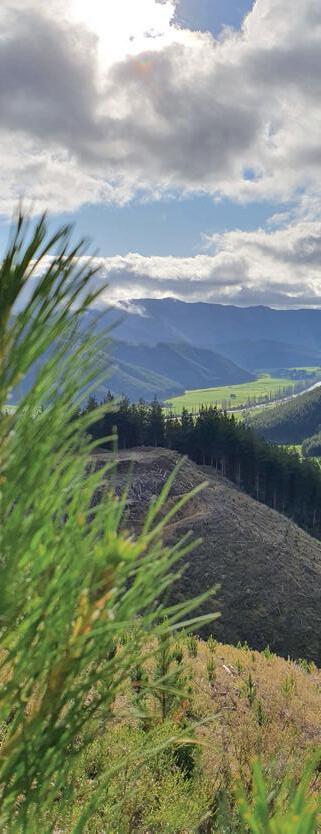
Peeni Henare said.
“Operational changes proposed to the forestry standards regarding slash provisions, sediment control and harvest management plans will start to improve the environmental impacts of forestry. The Government is also progressing further work to redesign the permanent forest category with a goal of enabling a successful transition from exotic species to indigenous forests,” Peeni Henare
adver tisingpr oof
“Amendments to the National Environmental Standards for Plantation Forestry will see the environmental effects of permanent pine forests being managed the same way as plantation forests. This means many standards such as ensuring firebreaks, rules planting next to rivers, lakes and

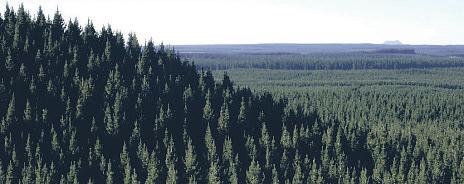
The changes follow extensive public consultation on the national direction for plantation and exotic carbon afforestation last year.
any management oversight or requirements, has the potential for unintended impacts on the environment, rural communities, and regional economies,” Peeni Henare said.

Please check your proof carefully and approve it or submit corrections by the Final Proof Alterations deadline. now appro ve or submit changes to your ad within the ATOL system at a time that suits you. Just follow the link proof email to view your ad, then cl ick the APPROVE or CORRECTIONS button right from there - no new emails required!
“Afforestation provides sequestration to offset gross emissions, bioenergy to support a low carbon transition and substitution for higher carbon materials.
However, large-scale change in land use for exotic carbon forestry, if left unchecked and without

“The devastation that unfolded in Te Tairāwhiti during Cyclone Gabrielle was a stark reminder what can happen if we get land-use settings wrong. Today’s changes help us towards addressing the findings and recommendations in the recent Ministerial Inquiry into Land Use. For example, the proposal to enable councils
The Professional Forest Management Company of Choice.
The Professional Forest Management Company of choice

Forest Owners Association president, Grant Dodson, says placing planting decisions in the hands of local authorities adds another layer of ill-considered regulation that will dictate and limit what landowners can do with their land.
PF Olsen is the leading provider of independent professional forestry services in New Zealand. Contact us now for all your forest management needs:
The Professional Forest Management Company of Choice.
PF Olsen is the leading provider of independent professional forestry services in New Zealand. Contact us now for all your forest management needs:
• Carbon accounting and advice
• Harvest management and log marketing
PF Olsen is the leading provider of independent professional forestry services in New Zealand. Contact us now for all your forest management needs:


• Harvest management and log marketing
•
•
• Forest establishment and tending
• Harvest management and log marketing
•
•
•
• Forest valuations
• Forest establishment and tending
• Forest valuations
•
• Forest Valuation
• Due diligence on forest purchases/sales
• Due diligence on forest purchases/sales
•
CH-8994297AA Nelson 03 544 0066 Blenheim 03 577 6675 OLSEN & CO LTD (RMD) publishing 06/24/21 booked size CSQ QUART VE CH-8994297AA (100%) publication Adv Supp NEM dimensions 12.3X12.4, cms width by height section CUSTOM SQUARE proofed 9/06/2021 12:22:08 PM
Nelson 03 544 0066 Blenheim 03 577 6675 LTD (RMD) publishing 06/24/21 booked size CSQ QUART VE (100%) publication Adv Supp NEM dimensions 12.3X12.4, cms width by height section CUSTOM SQUARE proofed 9/06/2021 12:22:08 PM
Forest establishment and tending
Forest valuations
Due diligence on forest purchases/sales
25 years experience in the industry the Tasman Forest Management (TFM) team offer services in:
With
harvesting
• Forest and woodlot
Domestic and Export Log Purchase
Forest Establishment
Emissions Trading Scheme advise and management
the
offices
Hawkes
and Southern North Island To find out more www.forestmanagement.co.nz office@tasmanforest.co.nz Nelson 03 540 3177 Blenheim 03 572 7902 32 July 2023 Forestry Farming TOP SOUTH MONTHLY
TFM are part of
Forest Management Group with
throughout the South Island,
Bay
Forestry Minister Peeni Henare. Photo: File.
Active skid site in Cable Bay, backing onto Glenduan. Photo: Barbara Stuart.
local forestryupdate
It’s tough but we are tougher
There’s no denying that we have moved into an extremely tough time in the forestry sector.
Demand for our wood is down and as a result demand for labour is down too - meaning there isn’t as much work on offer.
Unfortunately, more than a handful of good workers in the sector have been laid off while the rest battle with reduced hours during a cost-ofliving crisis.
Some local forestry crews are spending their time collecting pinecones, splitting firewood or working four-day weeks. Local log truck drivers are also working reduced hours and while this is not ideal, we must acknowledge the effort companies, and independents, are making to keep their staff employed where they can.
All the recent documentation and reports indicate this slump is forecast for a three-month period, with one month behind us and two months to go.
The problems is after this initial slump period we don’t know what the forecasting pricing and demand will be.
It’s easy when dealing with the unknown to feel anxious, or stressed, and if everything everywhere around you is a little unsteady.
Well hold tight, we have been through tough times before and made it, we can do it again- it’s tough but we are tougher.
It really helps to remind ourselves of this. By doing so it sends a message to our subconscious which causes a slight shift in our thinking which in turn increases positive thoughts and becomes a
powerful survival tool. Tough times also help us appreciate the not so tough times that we often take for granted and remember what goes down comes up, it’s the time in the middle riding the wave that is most unpleasant and it’s easy to get bogged down with all the negatives floating around currently. Don’t withdraw during tough times that just makes it tougher.
Instead connect with others in the industry but avoid the negative ones. Look at the past and use this as proof of tough time survival. Get some exercise and clear your head regularly and finally put some time into building crew morale to help weather these tough times, alleviate stress and support each other - now is the perfect time to have the crew around for a
meal or put on a team breakfast. And keep in the front of your mind yes, it’s tough we are tougher.
If you, or someone you know, needs help or support please contact:
• Rural Support Trust on 0800 787 254
• 1737 Free call or text 1737 any time, 24 hours a day to talk or text with a trained counsellor.
• Lifeline Phone 0800 543 354 or 09 522 2999 or text HELP (4357) any time
• Suicide Prevention Helpline 0508 828 865 (0508 TAUTOK0)
• Youthline 0800 376 633 or free text 234
• Samaritans 0800 726 666

• In an emergency call 111
Forestry is an important industry for New Zealand

Forestry contributes:
• an annual gross income of around $6.6 billion
• 1.6% of New Zealand’s GDP (Gross Domestic Product)
• to the employment of between 35,000 and 40,000 people in wood production, processing, and the commercial sector. Forestry and wood products are New Zealand’s fourth-largest export earner, just behind horticulture.
New Zealand is a small player in the international forestry industry, contributing only 1.1% of the world’s total supply of industrial wood and 1.3% of the world’s trade in forest products.

An estimated 34.38 million cubic metres of timber was harvested in the year ended March 2021. Volumes are expected to be high for the next decade (to 2030) as forests planted in recent decades reach maturity.
The export value of forest products in the year to June 2022 was $6.58 billion –$3.63 billion from logs and $2.95 billion from other forest products.
SPECIALIST FOREST ADVICE • Carbon and Farm Integration • Native and Exotic Management • Harvesting and Marketing • Forest Assessment DISCOVER WHY AT www.ifsgrowth.co.nz 03 928 5755 | consulting@ifsgrowth.co.nz Forestry Farming TOP SOUTH MONTHLY July 2023 33
Quality Used Tractors and Machinery





• Massey Ferguson 245 Power Steering Hustler Forklift very tidy - coming in
• John Deere 2250 4x4, non cab, GNS loader, good tractor - coming in
• Iseki 2160 22hp hydro in tidy order - $5,750
• Ford New Holland 7840 SLE and Pearson loader - $23,000
• Massey Ferguson 188 and loader
• Small 1.5 slasher and also 1.2 model Giltrap 3pl log splitter - $2,250
• Heavy duty 7ft back blade
• Pallet forks front uro and rear
• Hustler front fork lift suit 135 MF
• Austin 3 Mtre Heavy Duty Cambridge Roller
$5,500
• Rata vineyard cultivator crumbler range of sizes available Duncan 633 cultivator crumbler
• Dual wheels Snap/locks 38” 36” 34” 30” from - $2,200
• 13 Tyne Yeomen Chisel Plowel- $2,000
• 9ft Cambridge roller - $1,800
• Trimax 1.8 Vineyard Mower, tidy order - $3,000

• Hydralada double in-row vine trimmer. Fully serviced with joy stick - coming in
• Mole plough good order - $1,850

• Silvan 600l herbicide sprayer electric controls$5,000

• Celli Tiger 190 Rotary hoe new blade 3m wide cage roller - $9,500

• Hustler SL 700 2 bale feeder very good order$11,500
• Celli Pioneer 170 Spike Rotar very good condition - $12,500
• Lely 280m hay mower center pivot hay mowertidy order - $10,750
FARM MACHINERY & REPAIRS LTD Graham 021 228 3956 All prices plus GST
Berti TFBY 160 in very good order $6,750
Bucktown 1.8m h d mulcher hy side shift like new good hammer flails - $6,750
Massey Ferguson 5713 prem model Dyna 6 4 remotes 3300hrs prof model loader. Good rubber. 5 Star screen fitted (being prepared) $95,000
Celli Pioneer 140 spike rotor original spikes excellent condition - $14,000
Hustler Katipo 1150 l sprayer 12m hy boom reel and Raven GPS like new $10,000 under new price
Daedong 80hp low hours great order - $25000
Same Silver 100.6 and self level loader near new tyres high hours good old tractor$22,500
John Deere 6330 premium 110 hp JD self levelling loader very good tyres, fully serviced and in good condition. $55,000
34 July 2023 Advert Farming TOP SOUTH MONTHLY
Kubota M100GX 4X4 Near new 1300hrs very good order $56,000
Rather difficult season comes to an end
previous seasons, either in broker stores or in farm wool sheds.
July 1st signified the opening of a new wool selling season after what could be described as a rather difficult 2022/23 season where the majority of strong wool types struggled to gain momentum until the last few weeks when best styles enjoyed a serious boost, mid-micron types fluctuated wildly before faltering significantly, and fine wool types enjoyed superb support during their main sale months before looking shaky towards the end of June.
Wool quantities coming onto the market remained solid throughout the season with several auction sales accommodating volumes of old season wool which had been held over from
Due to climatic conditions experienced in South Island areas during 2022 and early 2023, many strong wool types contained medium to high discolouration confirmed by the accompanying colour test results, creating difficulty not only for growers hoping to gain better financial gain than the previous season but also for exporters struggling to compile parcels of similar type wools to suit their manufacturer customers. Added to the climatic yellowing influence on greasy wool colour, was also an obvious general lack of clip preparation carried out in farm woolsheds, due to farmer apathy as a direct result of long term poor wool prices and the perceived cost savings of reducing labour units at shearing time, hence many lines of otherwise visually even (for staple length

and colour) body wools, were discounted due to their containment of short, discoloured oddments.
Mid-micron wool types throughout the season also evidenced poorer than usual colour, attributable to a humid and damp growing season and an abundance of grass in most areas supporting such wool breeds which, in general, prefer a drier and cooler environment. Whilst most wool clips had been prepared well, some of the coarser types may have been better supported had they been prepared in a more ‘traditional’ way although, due to stocks of similar wool types held in other countries producing mid-micron wools, market prices did not encourage growers to take more care.
With a significant number of merino farmers subscribing to the fixed price forward contracts,



offered by several major wool brokers for part of the growers’ annual wool clips, allowing price certainty and a degree of insulation from spot market volatility, the remainder of merino types however drew extremely solid support in the Christchurch auction room throughout the August to October main sales months.
A negative feature during the 2022/23 season however was that several lines of merino fleece wools were accompanied by tensile strength test results poorer than expected (reported as NKT or Newtons per Kilotex) possibly affecting yarn spinner confidence. Whilst many New Zealand grown merino wools are regarded as superior compared to some of other origins, Australian market levels significantly influence market prices here, due to sheer quantities produced there, and
with Australian wool auction markets reporting much weaker demand recently, possible further head winds could be expected into the new season.
Mid-micron wools suffered a substantial fall in favour, both in New Zealand and Australia, by season’s close, suggesting a murky outlook.
Best styled pre-lamb shorn strong wool full length fleece types, along with best styled second shear strong wool types, enjoyed substantial demand improvement throughout the final few weeks of the season, with large price differentials obvious between best styles and poorer styles, another positive reason for care to be taken in the woolshed to ensure delivery of a product gaining maximum competition!
That’s my view.
CUSTOMISED FEED SOLUTIONS JUSTINE ELDER YOUR WEST COAST REGIONAL FEED PARTNER MOLASSES | BLENDS 027 255 3614 | justine.elder@graincorp.co.nz Livestock Farming TOP SOUTH MONTHLY July 2023 35
livestock
Production – Success vs Failure
JOHN BARNES Managing Director Fertilizer New Zealand


The difference between failure and success can be quite small. It can be that one small ingredient was missed out or put in out of sequence. For example, missing the baking powder in a cake will make the cake a failure.
In agriculture terms a kg of selenium or a few grams of cobalt in some parts of NZ make the difference between stock dying or surviving.
An example of this is the stock in the central North Island that were wasting away on volcanic pumice soils, it was eventually discovered that adding small amounts of Cobalt to their diet turned the stock around to being healthy. There are times when something quite small can make a big difference to any crop or production and it’s important to know what will facilitate this. Plants need a mix of N.P.K.S fertilisers but this is not the end of the matter, there is more to getting full production
than just these elements. As we have seen above, a relatively small amount of a mostly unknown element can make a big difference. So, what is likely to be missing in production going into this Spring?
It depends on the type of farm and farm model. In general terms there will be two aspects that determine spring production. The first is an imbalance of the major nutrients in the plants. An exam-

ple of this is that too much potassium and not enough calcium and magnesium will give an unbalanced diet to dairy cows creating a situation for Grass Staggers or Milk Fever. The other is not having the trace elements in sufficient quantities or being non available because of the major elements being too high and locking up some of the trace elements. Either way, the animals suffer and as a result
production is down leading to a financial loss to the farmer. So how to fix this?
Fertilizer NZ has a product that is scientifically formulated to balance up the nutrients plant leaf rapidly so that the animals consuming it will be healthy. In nature there is something that occurs when a plant nutrient status is balanced and that is the animal that eats it also becomes balanced and healthy which leads to better production and a better outcome for the farmer. It is a win-win for all.

How self-induced is the dairy squeeze?
Prices of dairy products remain volatile and difficult to predict, interest rates and compliance costs
keep climbing and staffing issues remain challenging. At first glance the NZ dairy scene doesn’t look bright however it is little different to the late 1970’s when I first got involved and all I and other young entrants could see was opportunities.
The dairy industry is currently this
country’s biggest export earner and will continue to be a major player well into the future but there are new challenges that have not been faced previously. Dairy farming in the 70’s and 80’s was recognised as an essential industry and communities and businesses were keen to support. The notion that people in the wider community with little if any direct link to the land might somehow view farming practises as environmentally harmful, and support a movement to limit intensity and productiveness was inconceivable.
There is a sound argument that the dairy industry has laid the base of its own contraction through the overuse of nitrogen fertiliser in the quest for short term sustainability. The productive capacity of pastoral land is deter-

mined by the amount of carbon in the form of soil organic matter in the top 20cm of the soil. As it is under grazed permanent pasture that carbon can be most quickly sequestered it seems incongruous that intensive pastoral farming is now viewed by many as a problem. This paradox may be explained by appreciating that applied synthetic nitrogen burns and destroys soil carbon with irrefutable evidence available from Europe. With less carbon in the soil the holding capacity for both nutrient and moisture declines. The initial response to declining growth has often been to apply more nitrogen further accelerating carbon loss. Cows are grazing ruminants and quality pasture remains the lowest cost feed. To maintain total production, grain and imported palm kernel extract have been used with the latest data from DairyNZ showing the gap between income and the cost of production clos-
ing rapidly. However, there are those planning to milk fewer cows sometimes on less hectares reducing infrastructure pressures with income comfortably exceeding costs. The industry response to steadily decreasing farm profitability, a trend since 1950, has been to lift the number of cows milked by an ever-decreasing number of people. Those that have opted not to follow that path have employed alternative technology that does not rely on synthetic nitrogen use and have turned pasture and animal management into an art form, focussing on the enjoyment that comes from a harmonious low stress lifestyle.
Functional Fertiliser has over the last twenty-five years provided products and supported farmers that now grow more pasture and enjoy outstanding animal health and performance with lower overall costs. For more information call Peter Burton on 0800 843 809.
36 July 2023 Fertilizer Farming TOP SOUTH MONTHLY
fertilizer
From the Fieldays at Mystery Creek
TUNLEY Hortnz
More than 100,000 people – including politicians and Government officials from Wellington – attended the Fieldays at Mystery Creek last week.
The Fieldays are a chance for the food and fibre sector to reflect, hear from different speakers, experience new technology, as well as socialise. It being an election year, these Fieldays were also an opportunity for politicians to have contact with the food and fibre sector’s grassroots.
KPMG used the Fieldays to release its annual, Agribusiness Agenda, which is titled ‘Energising a World of Anxiety,’ this year. The detailed report concludes that New Zealand’s food and fibre sector is at a crossroad, and ‘uncertainty around the pathways for change is a significant factor in anxiety’. This statement says it all for me. The horticulture industry knows it must change the way it grows because of climate change, labour shortages, and changes in consumer preferences. etc.
The industry also knows it has the solutions to some of New Zealand’s challenges, especially around reducing emissions and ‘feeding our five million first’ – another of the points the KPMG report makes.

However, which way is the best way to go?
Particularly when some growers – like those affected by Cyclone Gabrielle in the Hawke’s Bay and Tairāwhiti Gisborne – need to know the best way to go, right now.





I have been associated with the food and fibre sector for more than 30 years. Over that time, we’ve had our uncertainties, but today’s challenges are the most numerous and complex we’ve faced, which is why the sector is so anxious.

So, what’s the solution? Coming together to develop the solutions must be the answer. The challenge with this approach is to keep everyone in the tent while the different options are examined, as well as to ensure the process is as quick as possible, to give people the hope they need at this critical time.
In terms of the tent, there’s a large number of stakeholders involved: central and local Government, iwi, commercial players, as well as service providers like banks and insurance companies. And all these stakeholders must come together together – and quickly – for the common good, and plan for a future that involves a greater number of extreme weather events.
Because of the size of the challenge, central Government needs to take the lead. For a start, they must ensure that reform of the Resource Management Act supports communities to do what they must do to adapt –and quickly. Government also has access to a wealth of climate change impact modelling,
which needs to be made freely available to support communities’ decision making. Then there’s the funding of all this change.
Taxpayer money needs to be applied wisely over a timeframe far longer than
Offering
current Government Budget setting processes allow. Plus, public/private funding arrangements need to be encouraged, and managed better than they have been in the past.
These are the challenges with coming together to plan and deliver the fundamental change that’s needed. But coming together is the best way forward, as it will get us solutions that stick, empower, and restore hope.
Horticulture Farming TOP SOUTH MONTHLY July 2023 37 horticulture Custom BIRD NETS NO MINIMUM ORDER! 0800 108 382 • 115 Bolt Road, Tahunanui, Nelson • ritex@ritex.co.nz • www.ritex.co.nz • Groundcover • Windbreak Cloth • Mulch Cloth • Reflective Groundcover • Postcaps • And a HUGE range of stock nets in all shapes and sizes. VALTEX Also Offer VALTEX HORTICULTURAL PRODUCTS WILL SEE YOU RIGHT.
high quality
10
warranty, with absolutely no minimum
based
products for the
market, meaning they’ve got at least five containers a month on the water to
– offering prompt delivery to your vineyard
of
new season, with super competitive pricing.
bespoke bird nets with a
season UV
order. Their world class Thailand
maker makes many
NZ
NZ
ahead
the
time to
0800 108 382 • 115 Bolt Road, Tahunanui, Nelson • ritex@ritex.co.nz • www.ritex.co.nz
It’s a great
contact them for a quotation – no job is too big or too small!
NADINE
GM’s Silverado Pick Up
I get asked to speak to various groups most weeks and enjoy doing so. While General Motors dumped Holden more than six years ago I’m often asked during question times about the next new Comodore or when the Colorado is being updated. It’s quite obvious there is still a very strong bond with Holden. GM though, is still in New Zealand, selling as GM Speciality Vehicles. At this years national fieldays they launched the 2023 Chevrolet Silverado 1500 range, claiming it sets new standards for on-road smoothness and off-road capability. Two models are available, the first-ever ZR2 off-road focused 4.2-tonne tonne tow rated vesion and the 4.5-tonne towing LTZ Premium. Also on display were current model Heavy Duty 2500 and mid-engined C8 Corvette, manufactured righthand-drive in Kentucky.

The electronic transmission shift control push button controls
on the centre console, now a 10-speed automatic transmission providing four mode selection 2WD, 4WD auto giving higher traction 4WD on sealed surfaces, then off-road 4WD centre diff locked in both high and low ratio. Seating strangely for a ‘Full Sized Truck’ as it’s known, is only set up for five, though they are well catered for in heated/cooled leather chairs for the front with a massive centre console glove box. (You could fit a third without it.) The rear set of pews are huge with a real lounge feel, easily swallowing three comfortably for an interstate trip! The 13.4-inch centre diagonal colour touchscreen is easy to read and set up preferences, though I did find it well marked with fingerprints after two days of people through the vehicle. It is backed up in front of the driver by a 12.3-inch configurable instrument cluster.
The exterior has a redesigned front-fascia with new headlight design and now includes daytime running lights, but it’s really the dimensions that make it stand out.
ZR2 Identifiers are - suspension
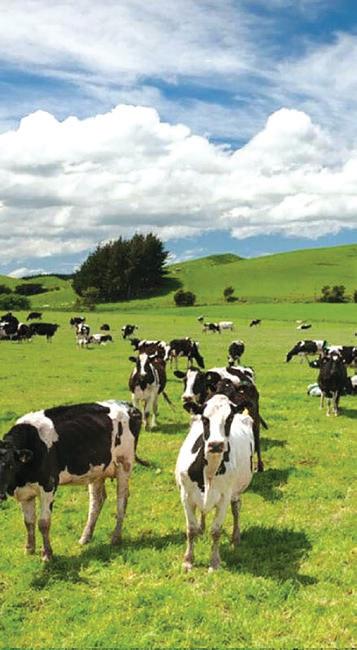


Looking
with high-performance lifted suspension and Multimatic DSSV dampers. These dampers increase maximum front and rear-suspension travel using three separate valves to control damping and three connected chambers for fluid flow. Front and rear electronic locking differentials (E-Lockers) Drive modes, including Terrain Mode, that allows precise control of the accelerator and braking to handle tough terrain. The Silverado ZR2 can be brought to a complete stop by simply lifting off the accelerator pedal.
Front grille-mounted camera, the under-truck front image displayed on the interior screen, al-


lowing it to see rocks, debris, and obstacles beneath the chassis. It also has a water-repellent coating and a washer to help keep clean off-road - nice touch.
Safety suite of active and passive advanced safety technology and driver assistance features, RearCross Traffic Alert, StabiliTrak ESP, Electronic Stability Control System with Traction Control and Forward Collision Alert with Low-Speed Automatic Emergency Braking and Trailer Sway Control.

33-inch on 18 inch rims tyres fill the wheel well and provide a softer compliant ride, also better for road driving and offer all-round

capability.
Large aluminium underbody skid plates as shown in the picture, optimise off-road capability. A unique black chrome grille with a Chevrolet ‘flow-tie’ emblem, raised black hood insert with ZR2 badging, exclusive ZR2 wheel flares, unique 18” Gloss Black wheels and exclusive Jet Black/Graystone leather-appointed interior with dark trim.
The LTZ Premium in addition has 20-inch Sterling Silver Wheels with All-Terrain tyres, a Jet Black leather-appointed interior, adaptive cruise control, huge power sunroof and a 15-inch centre screen as well as al heads-up display and tray camera.
Powering LTZ Premium and ZR2 6.2-litre EcoTech3 Turbo Diesel V8 engine, 313kW and 624Nm Silverado LTZ Premium $144,000 and the more popular Silverado ZR2 from $149,000^. Both plus on road and ‘Jacinda tax!’


AVAILABLE NOW Give us a call on 03 577 9238 to find out more.
have long and short term storage available for household item, boats, caravans, and trailers. Marlborough based. The SIS Ball Cock Valve TARANAKI ENGINEERING SOLVING A NATION-WIDE FRUSTRATION WITH LEAKING BALLCOCKS So simple it could be serviced by your bank manager! Designed and manufactured in New Zealand We offer a lifetime warranty on the CNC machined main body 0800 175 720 www.sisballcock.co.nz 38 July 2023 Motoring Farming TOP SOUTH MONTHLY motoring
for storage? We
Country MOTORING
Got something to buy, sell or promote? Contact us: sales@nmf.co.nz Farming TOP SOUTH MONTHLY
with Ken Strungnell
Rural Community Noticeboard

The Rural Noticeboard is for local not-for-profit community groups and organisations to advertise community events or projects that will be of interest to our 35,000 rural readers over the top of the south. Thanks to the team at Tasman Honda for making this noticeboard possible. If you have an up-and-coming project or event that you wish to place on this noticeboard, please contact eloise@topsouthmedia.co.nz
This winter, Nelson City Council aims to plant 50,000 native plants throughout Nelson, with 5,000 of these planted by volunteers across four public events

These yearly planting events help to protect and restore our natural environment. They’re also a lot of fun!
The Marlborough A+P Association are celebrating 150 years and we need your support to make it a good one! This year’s show is an Equestrian Royal Event with equestrians on Fri 3rd, Saturday 4th and Sunday 5th November. All other sections are on Saturday 4th and Sunday 5th. More information (including Trade section information) can be found at www. marlboroughshow.co.nz or by contacting the Secretary Christine Fowles at marlborough. show@xtra.co.nz / phone 035785822.
Be sure to follow the ‘Marlborough A+P Show’ on FB for up-to-date information.









These events wouldn’t be possible without the many volunteers who pitch in every year. So, if you or someone you know is interested, please do come along.

Please wear sturdy shoes and bring your own gloves. Spades will be provided, but feel free to bring your own if you can.
Wakapuaka River (1,500 plants)

Saturday 15 July at 10am (Rain Day Sunday 16 July)
Celebrate Matariki with this planting event in Wakapuaka. A BBQ will be provided for volunteers. Parking: by the Māori Pa Road bridge just off Cable Bay Road.

Planting Workshop
Planning, preparation, planting and protection

Wednesday 26th July 9:30 – 11:30
Yealands Winery Cellar Door

Cnr Seaview and Reserve Roads, Seddon
The workshop will focus on riparian planting using native species, but is applicable to other native planting projects.
The workshop will include an outdoor visit to an active restoration site, so please bring warm clothes, raincoat and solid footwear
Maximum numbers so registrations essential: https://nzlt.infoodle.com/f/PlantingWorkshopJuly2023








Notice Board Farming TOP SOUTH MONTHLY July 2023 39
tasmanhonda .co.nz















$15,086 excl Kodiak 450 Power steering, 4WD Specialised farm bike $4,434 excl If you need to upgrade your Yamaha workhorse it is vital you back order now. FILCO CALL US NOW! 03 547 2420 Powerful 850cc, 4WD, larger tip deck, high profile suspension. Wolverine X2 Ute $17,477 excl Kodiak 700 Power steering, 4WD $13,912 excl Kodiak 450 Non power steering (blue) KVF 300 2WD, 4 Wheeler solid performer on flats and roaded hills. GREAT PRICE AT $7,822 +gst RELIABLE AND TOUGH MULE PRO MX $23,039 $6,604 excl FILCO SOLUTIONS Kawasaki Mule SX 2x4 $15,213 excl KAF M ule Bigfoot 4x4 $17,822 excl FARM & SPORT ANNESBROOK NELSON www.filco.co.nz Rod Payne & Dave Filer A fond farewell to this top farm bike, limited stock so be quick. Once they’re gone, no more! KL250 STOCKMAN 0% DEPOSIT - 0 REPAYMENTS FOR 12 MONTHS All at a competitive 6.9% fixed rate! Filco Yamaha make it easy to upgrade your farm bikes. Limited time offer! FIELD DAY SPECIALS Buy or upgrade into a new Kawasaki Farm bike and we will give you up to $1500 to put towards any genuine accessories! A windscreen, tray anything to make your job on the farm easier. Celebrate the Field Days with us! ON SELECTED KAWASAKI MULE SIDE BY SIDES UP TO $1500 40 July 2023 Advert Farming TOP SOUTH MONTHLY





























































































































































































 Roger Nott
Roger Nott


















































































